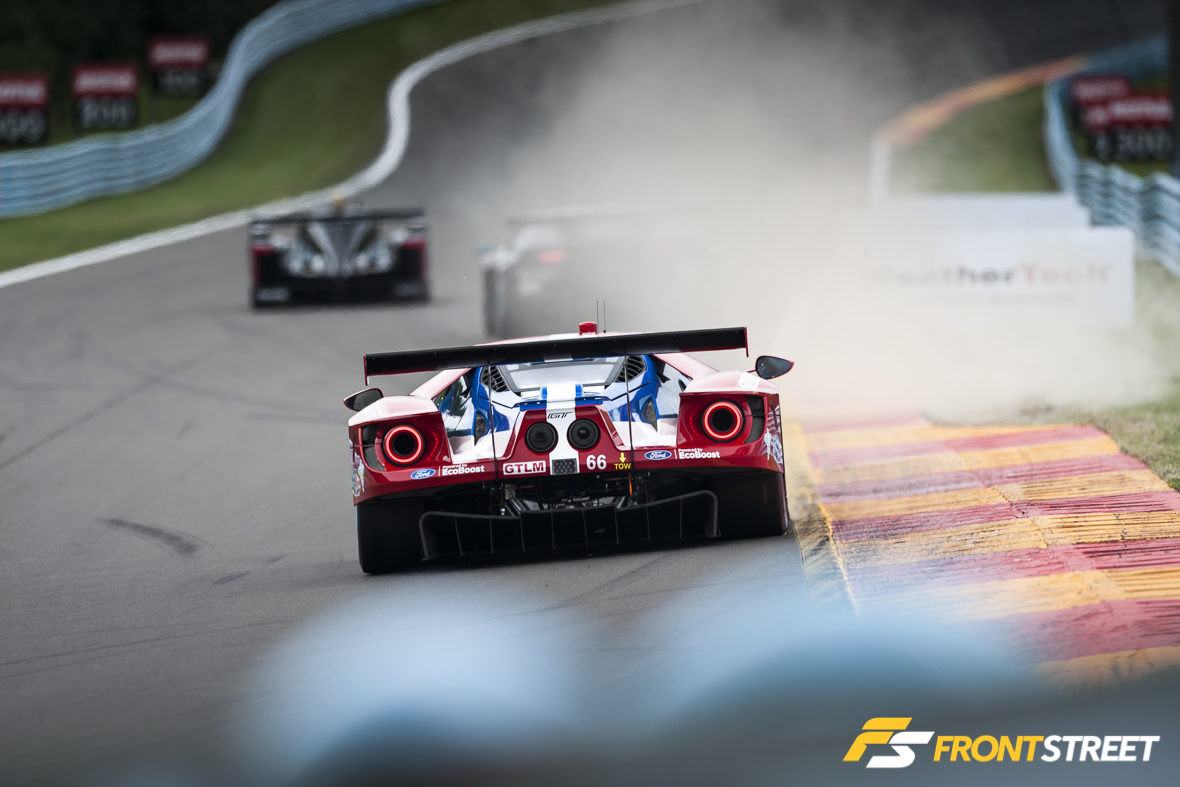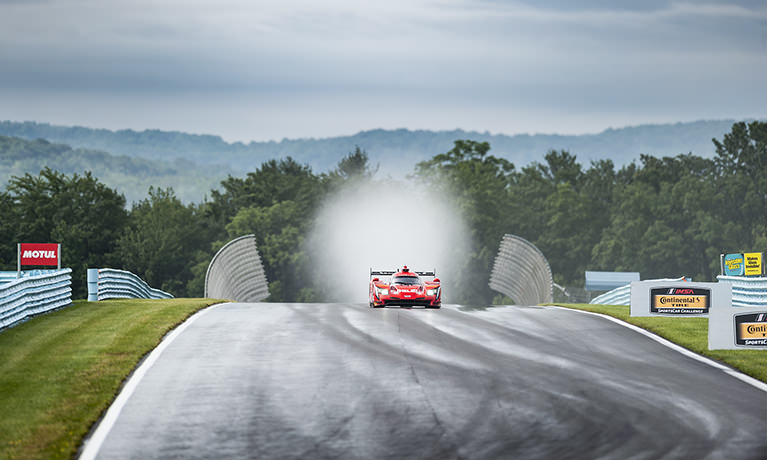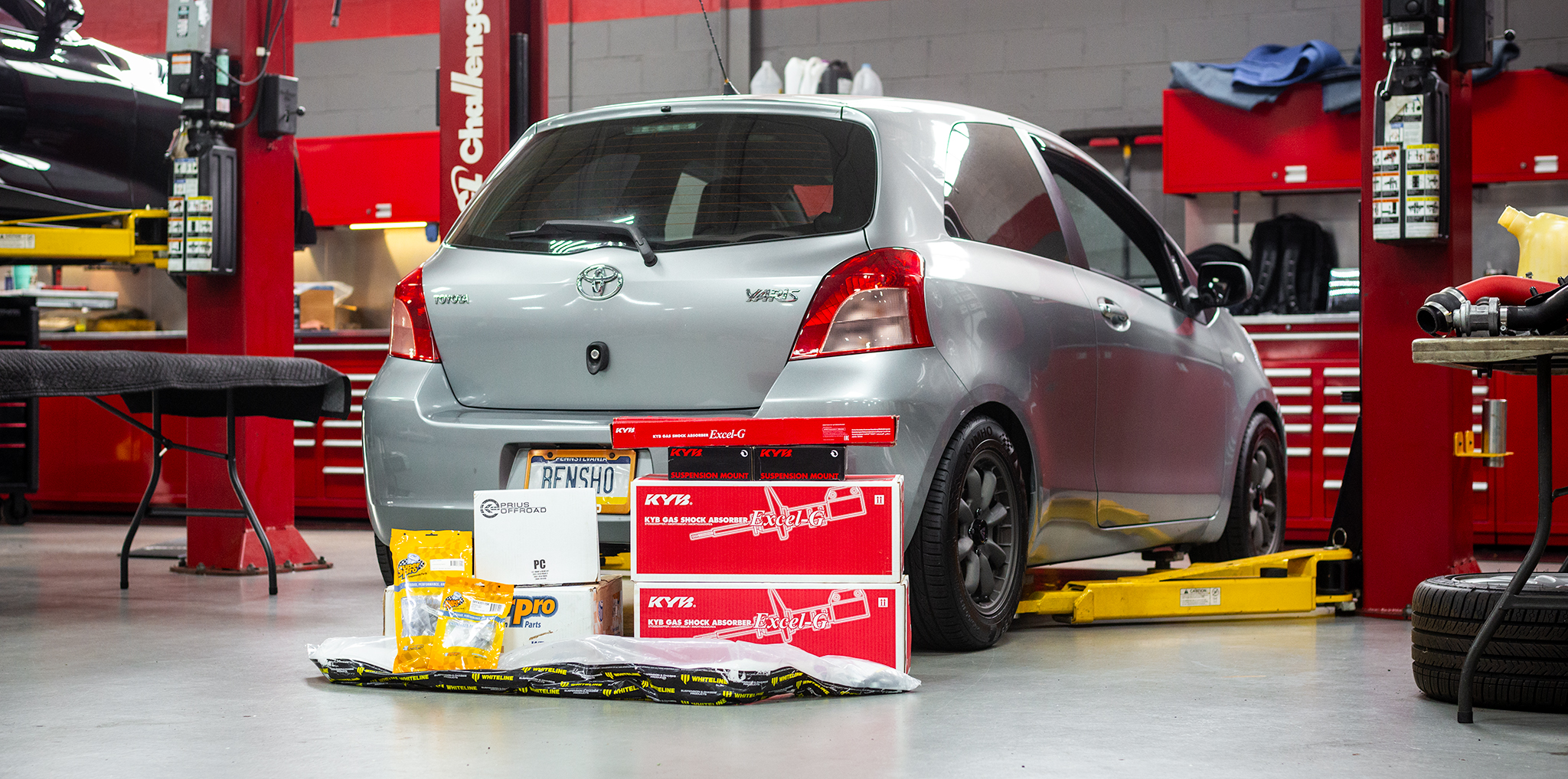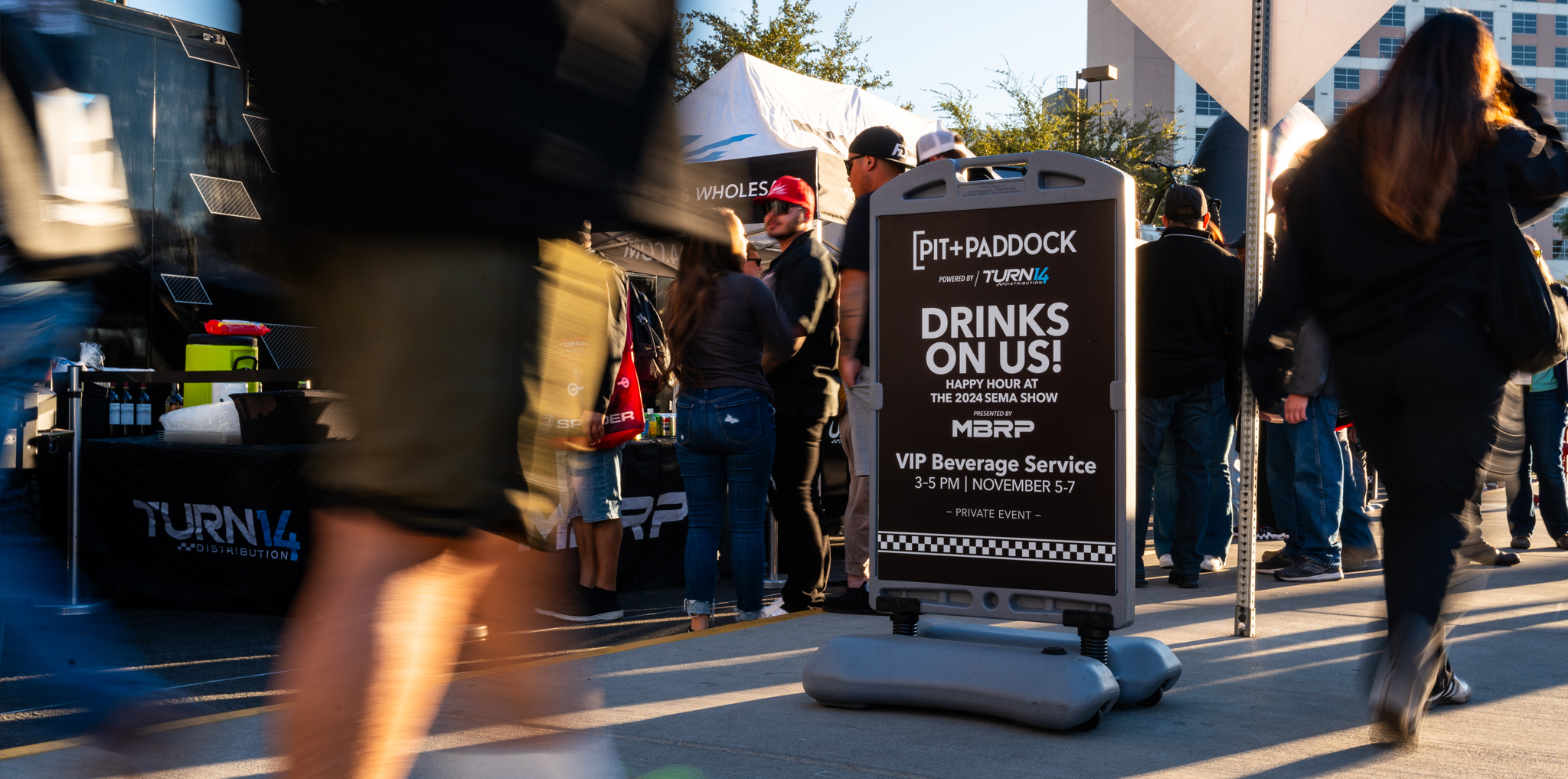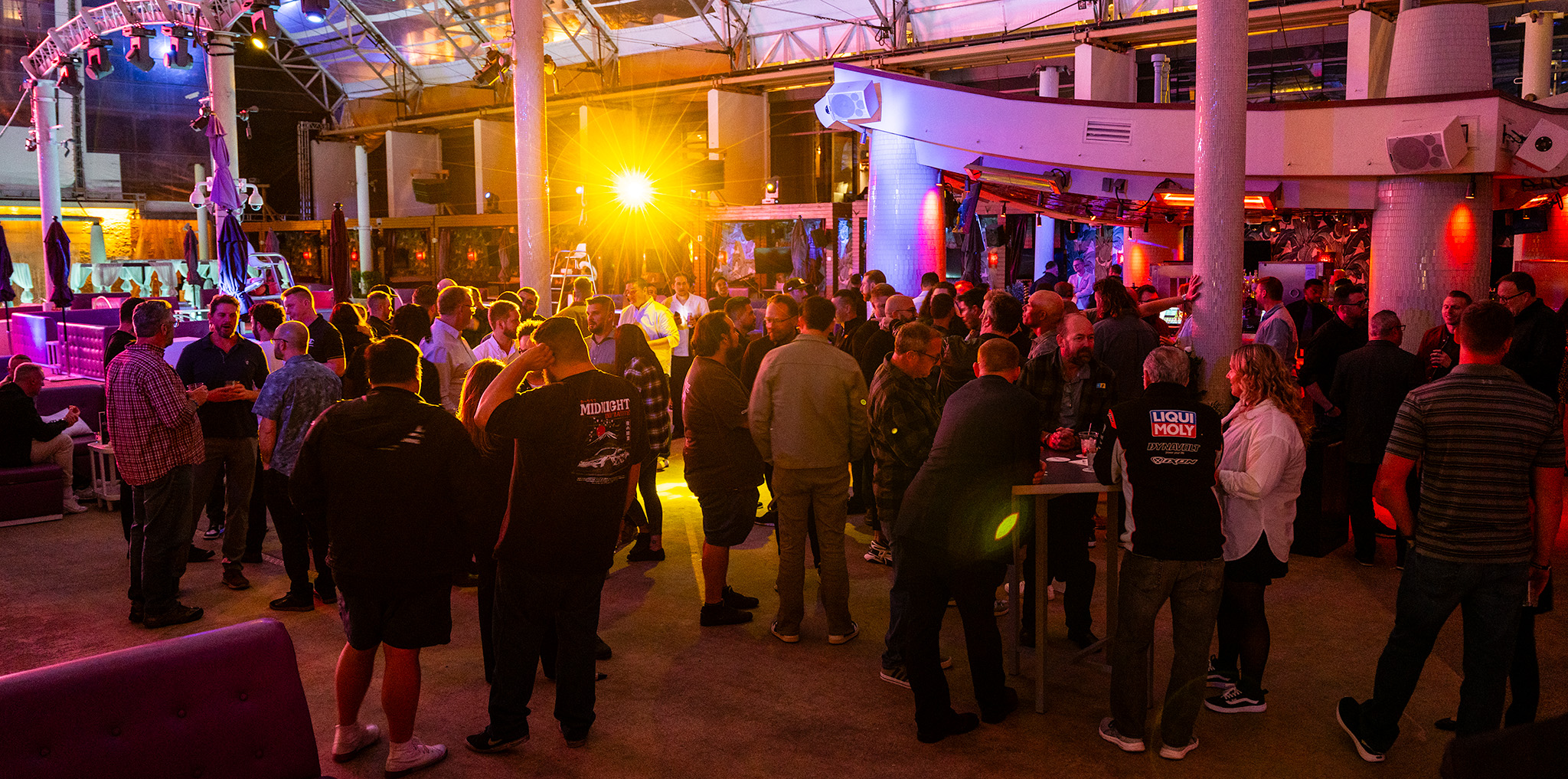Two hundred forty years ago, the tide of the American Revolutionary War turned at the battle of Saratoga in upstate New York. British general John Burgoyne counted on the upstate region’s plentiful waterways and rough terrain to be a great refuge for his army to surround colonial forces cornered in fierce battles throughout New England and lower New York. But what he didn’t count on was the resolve of George Washington’s Continental Army and resourceful militia soldiers fighting for their livelihood. After several hard and costly battles fought amidst the peaceful greenery of upstate New York, the patriots declared a major victory and the rest, as they say, is history.
It may have been a simple scheduling coincidence that originally landed the turning point of IMSA season competition in rural upstate New York near Independence Day weekend, but that’s not to say the significance of this budding tradition isn’t front of mind for dozens of the nation’s most elite sportscar racing teams and thousands of dedicated fans. It seems to be increasingly so, evident this year the moment race machines rolled off their trailers.
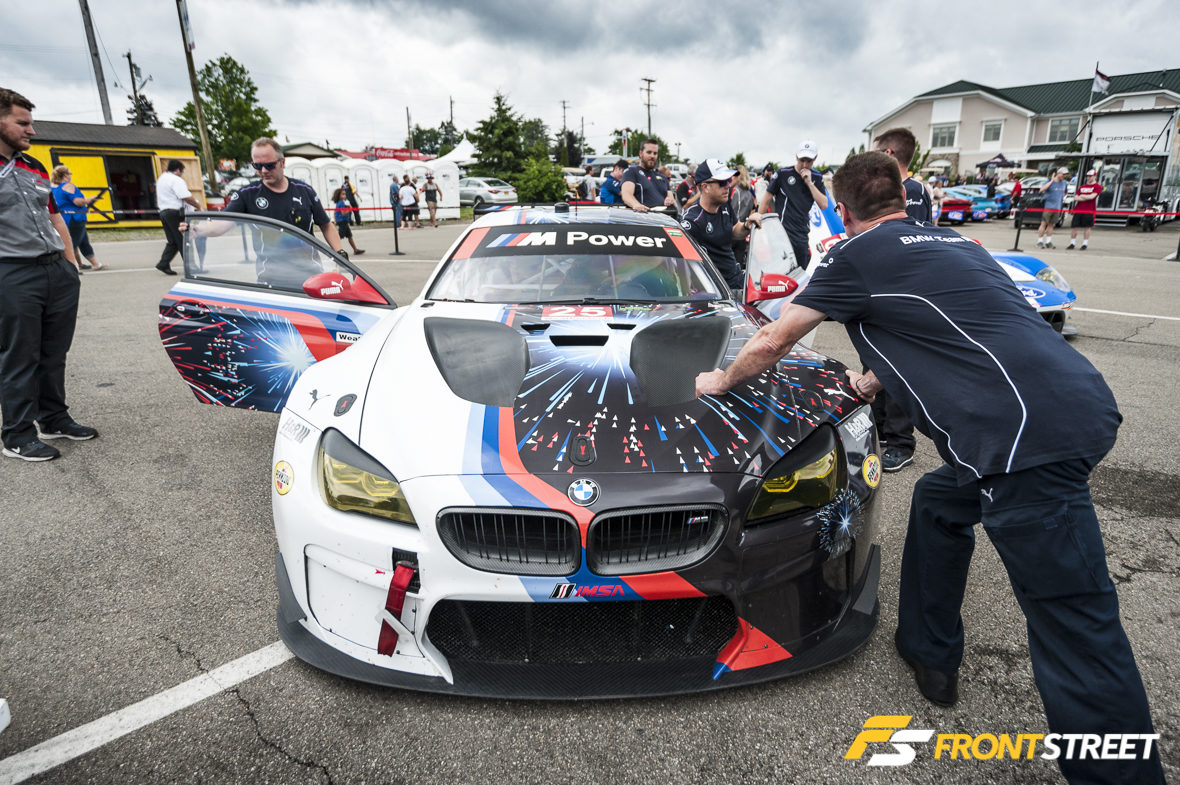

It’s not common for racing teams to change their livery halfway through a racing season. With sponsor prominence and placements, and overall aesthetic appeal being the product of extensive work behind the scenes. But that didn’t stop many competing teams from doing exactly that in honor of Independence Day and what it means for all of us today.
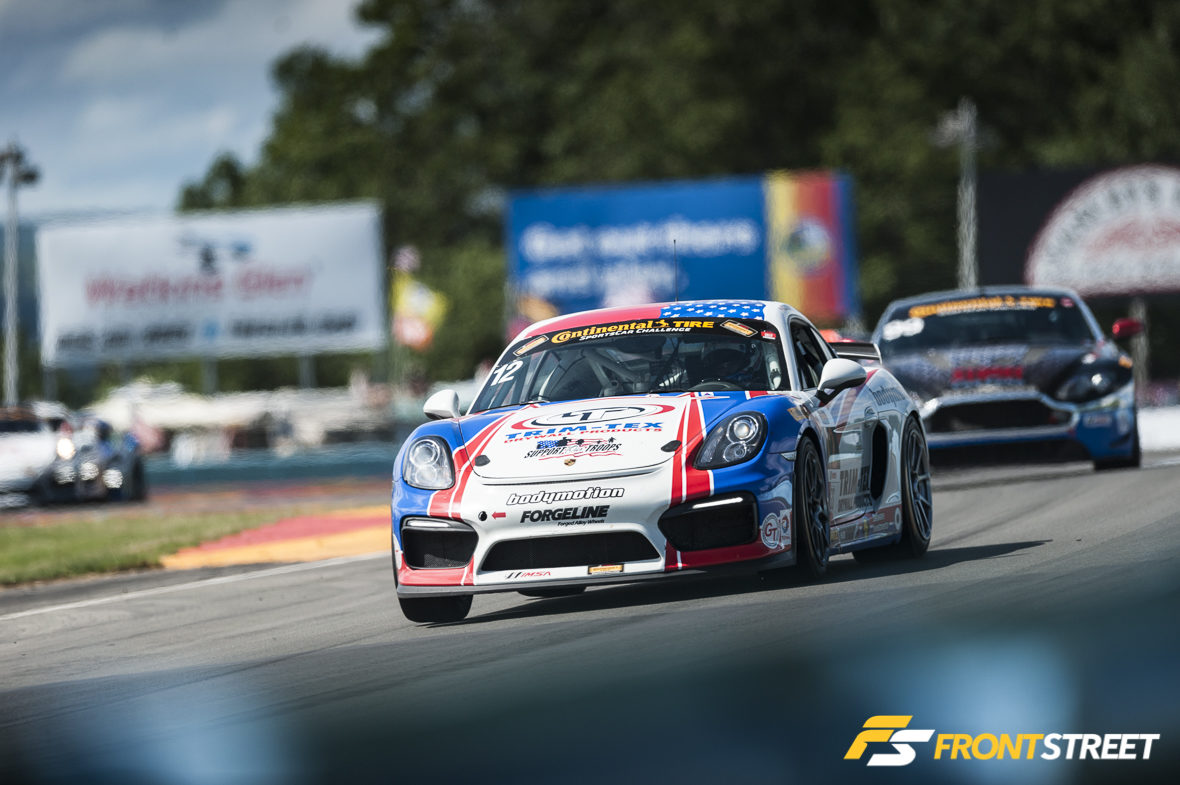
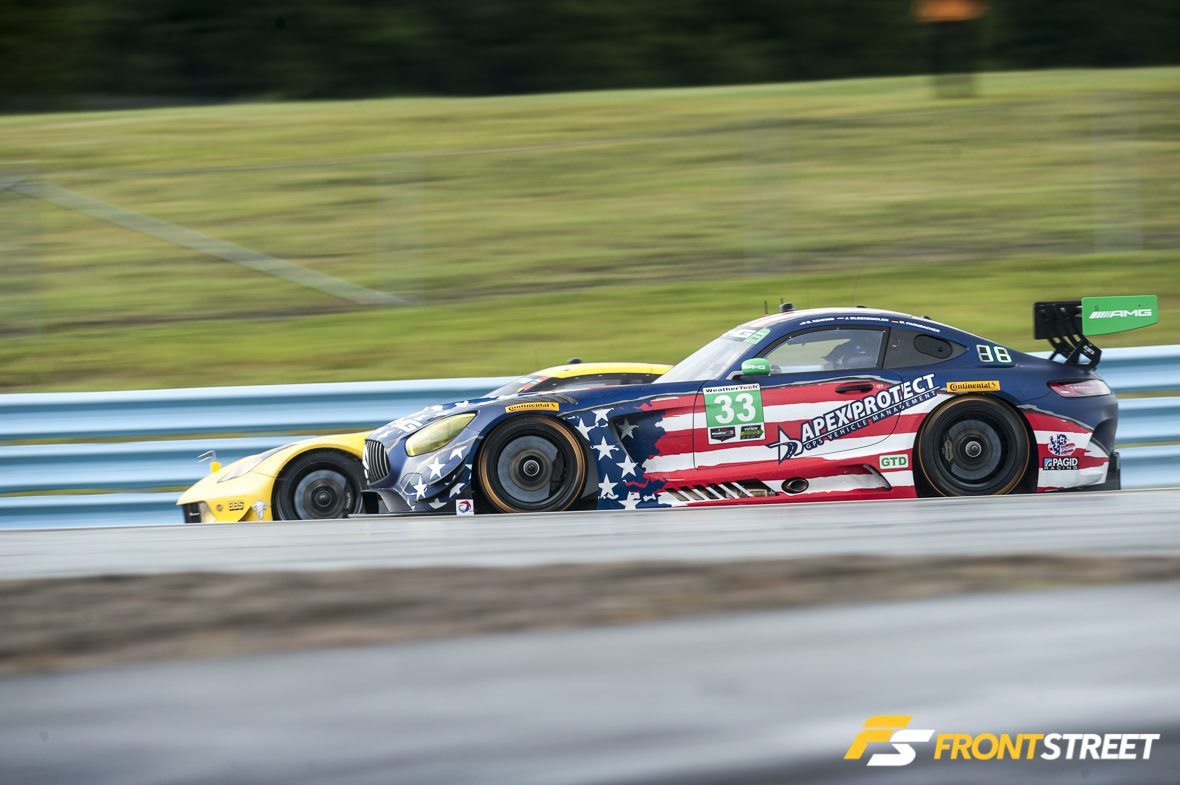
Uncertainty Ahead
Also evident from the start was that this would be a challenging round for all in attendance. The Watkins Glen International circuit has existed in more or less its current configuration since 1992—actually since 1971, excluding some chicanery—and while many drivers competing in IMSA today are innately familiar with the course that’s become known as “The Mecca of North American Road Racing,” in all that time it hasn’t become any less formidable. Elevation changes more than it stays flat, off-camber areas limit driver confidence, there’s very little runoff between the tarmac and unforgiving steel guardrails that line the entire course, and weather is always an uncertainty. This year’s race saw all those elements come into play.
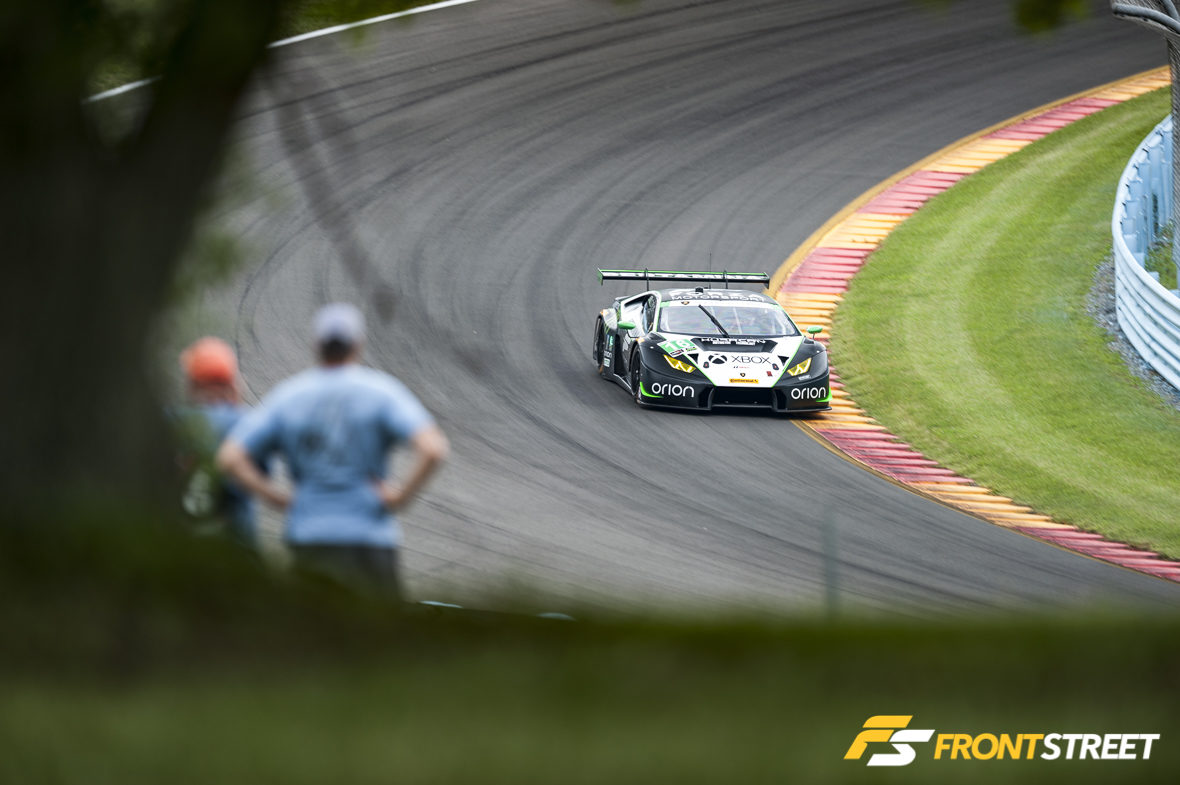
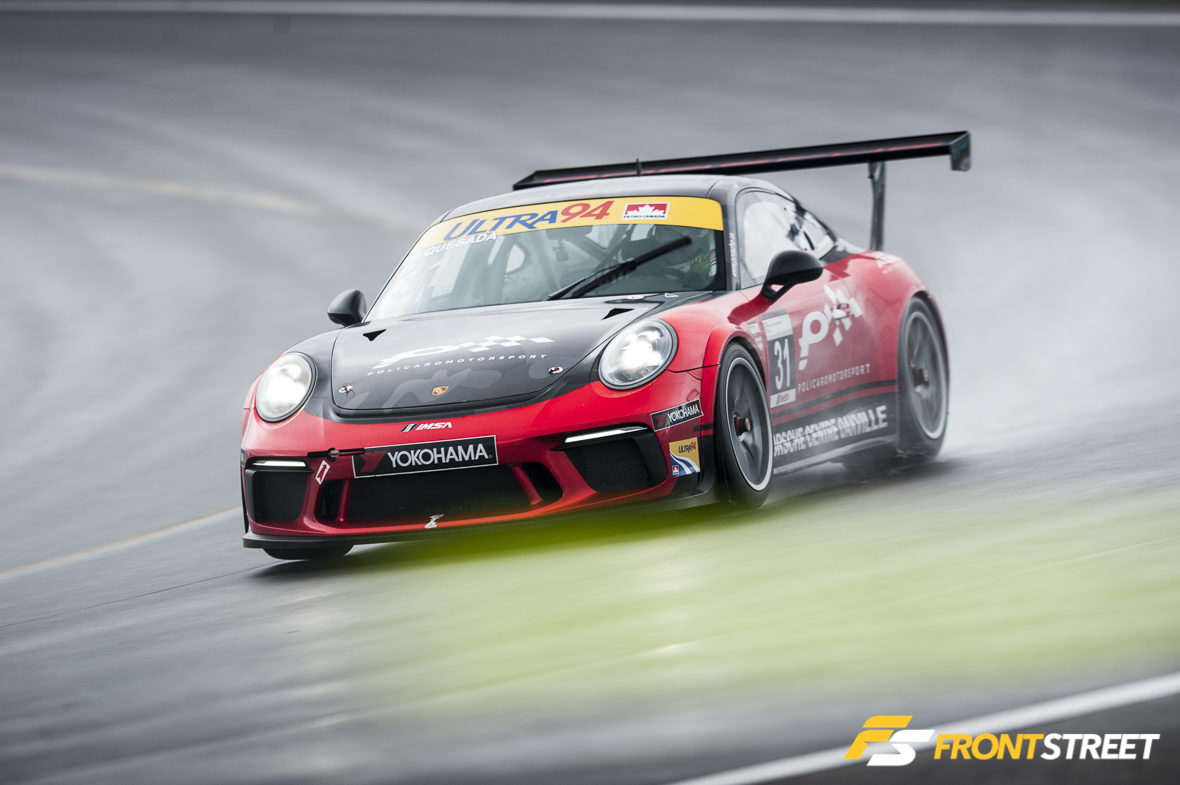
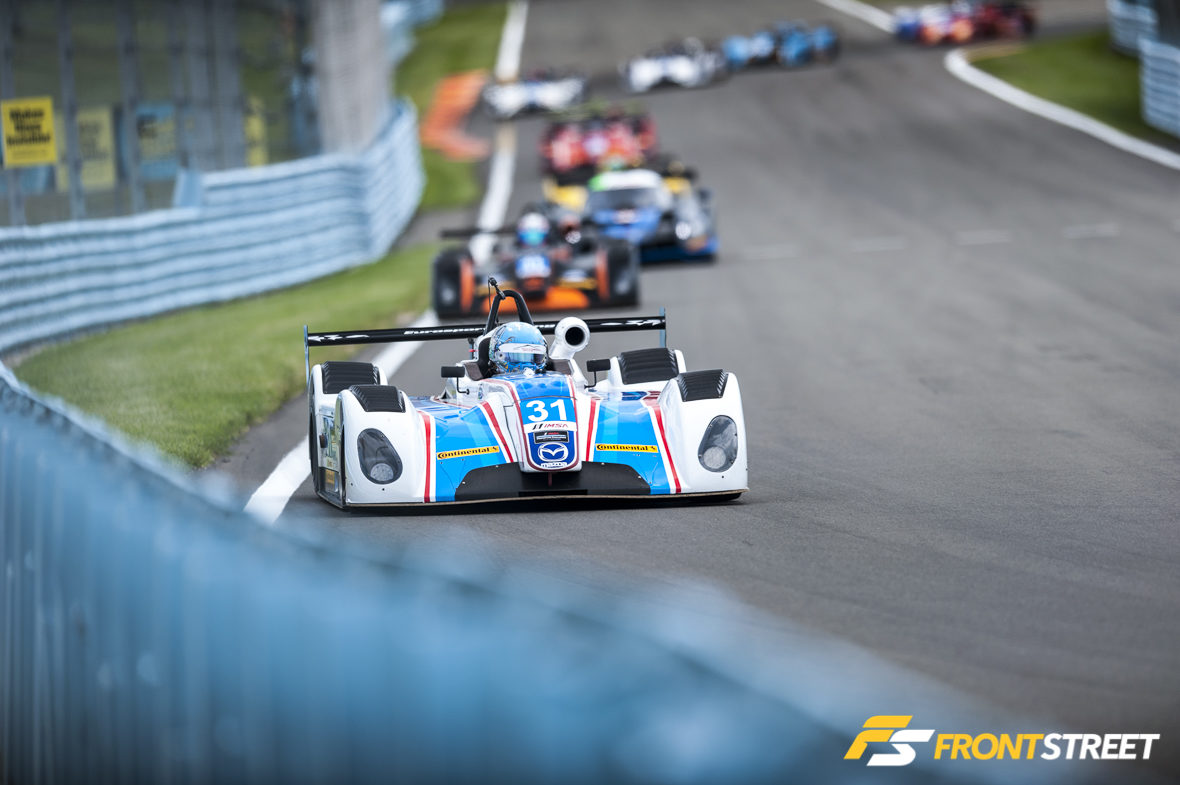
The Sahlen’s Six Hours of the Glen was the first time since the Advance Auto Parts Sportscar Showdown at COTA that the Porsche GT3 Cup, Lamborghini Super Trofeo, and Continental Tire Sportscar Challenge joined all four classes of WeatherTech Sportscar Championship competition, and adding to their ranks in only their second event of the year was the IMSA Prototype Challenge presented by Mazda, which is the new name for the 12-season-running IMSA Prototype Lites series.
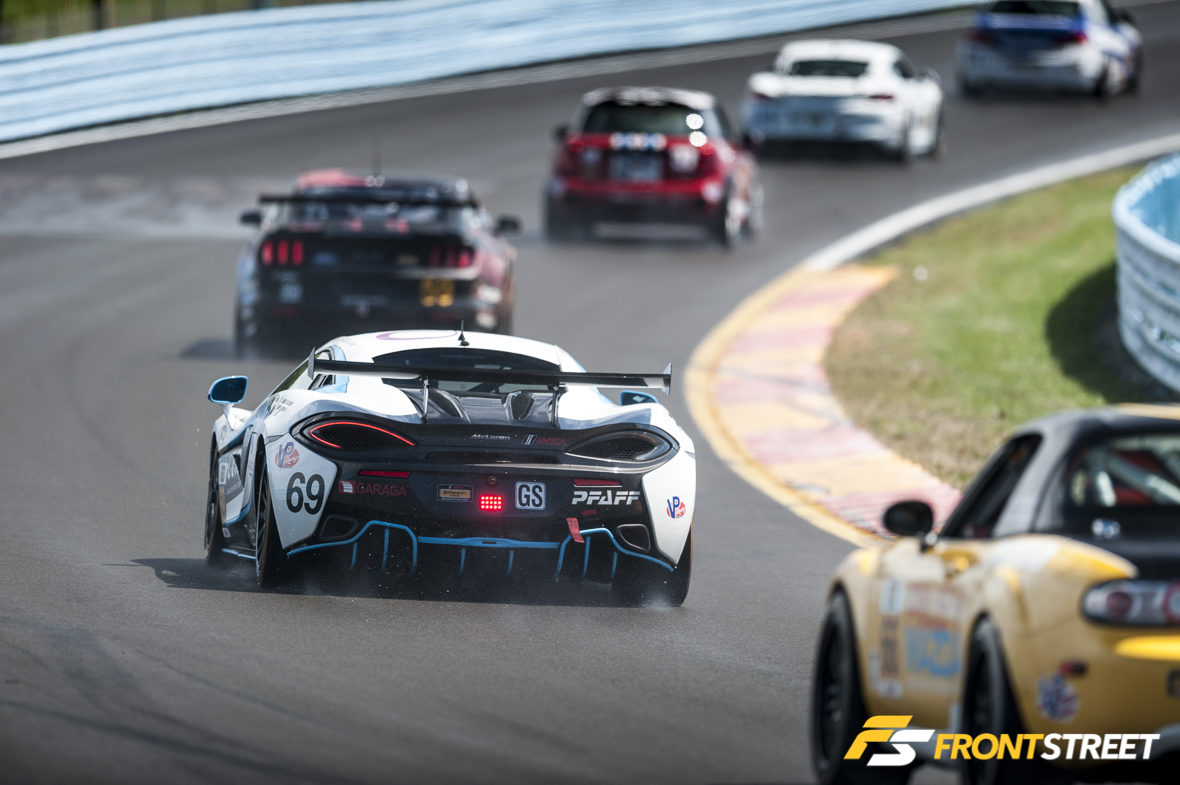
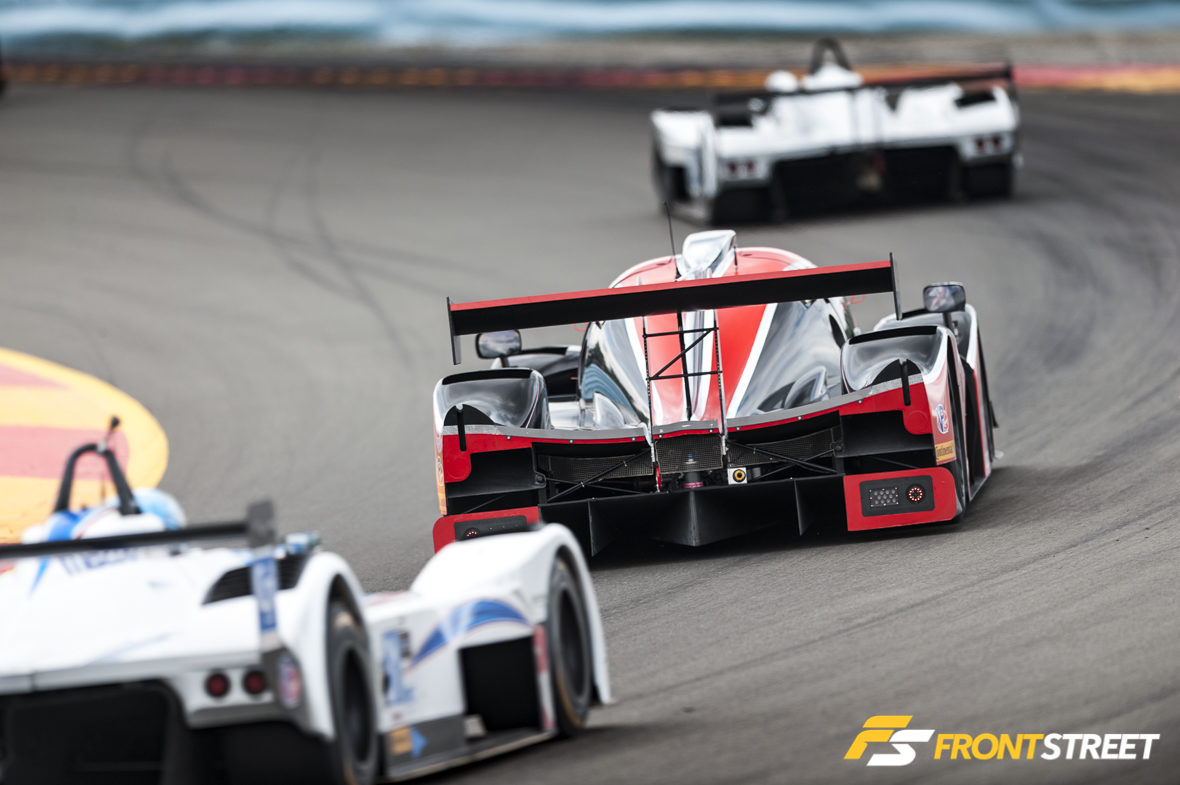
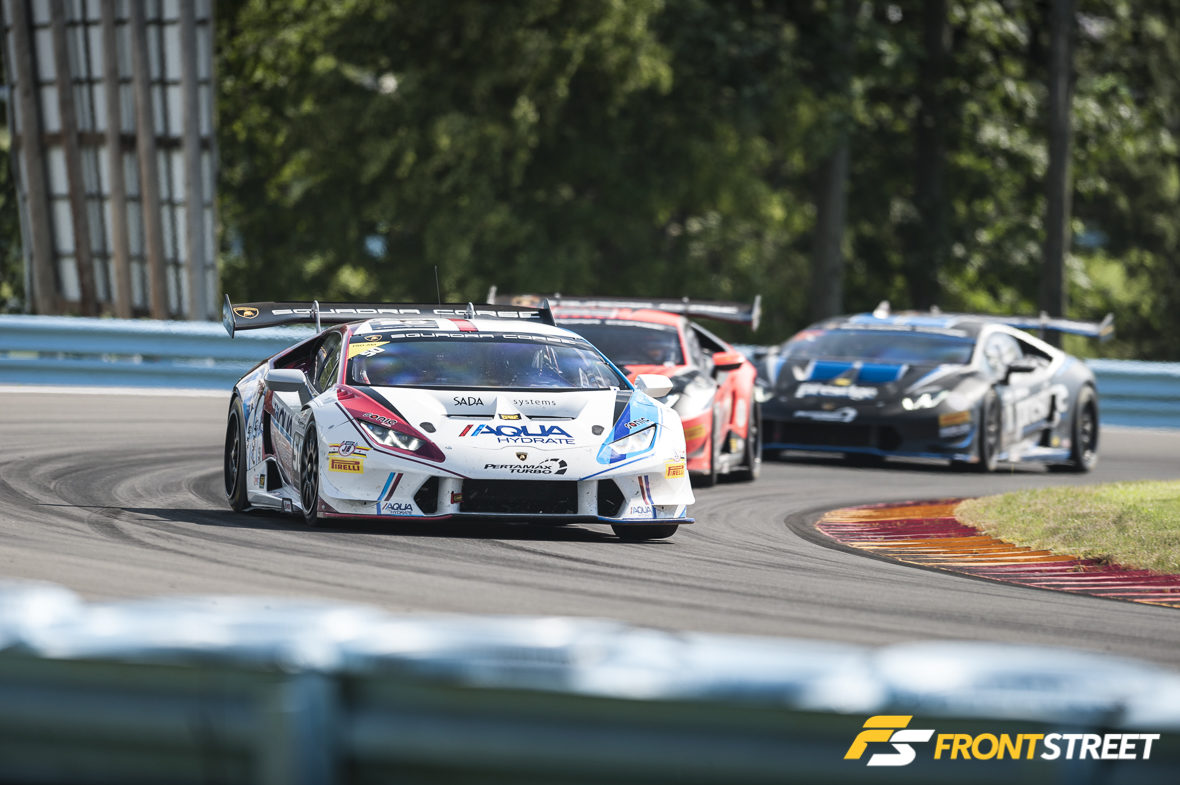
For teams and fans (and … ahem … motorsports photographers) who prepared for it, weather throughout the week was a blast. Sun shined, breezes blew, rain occasionally fell, but the elements seemed to work together by just the right amount to keep spirits high and the event enjoyable.
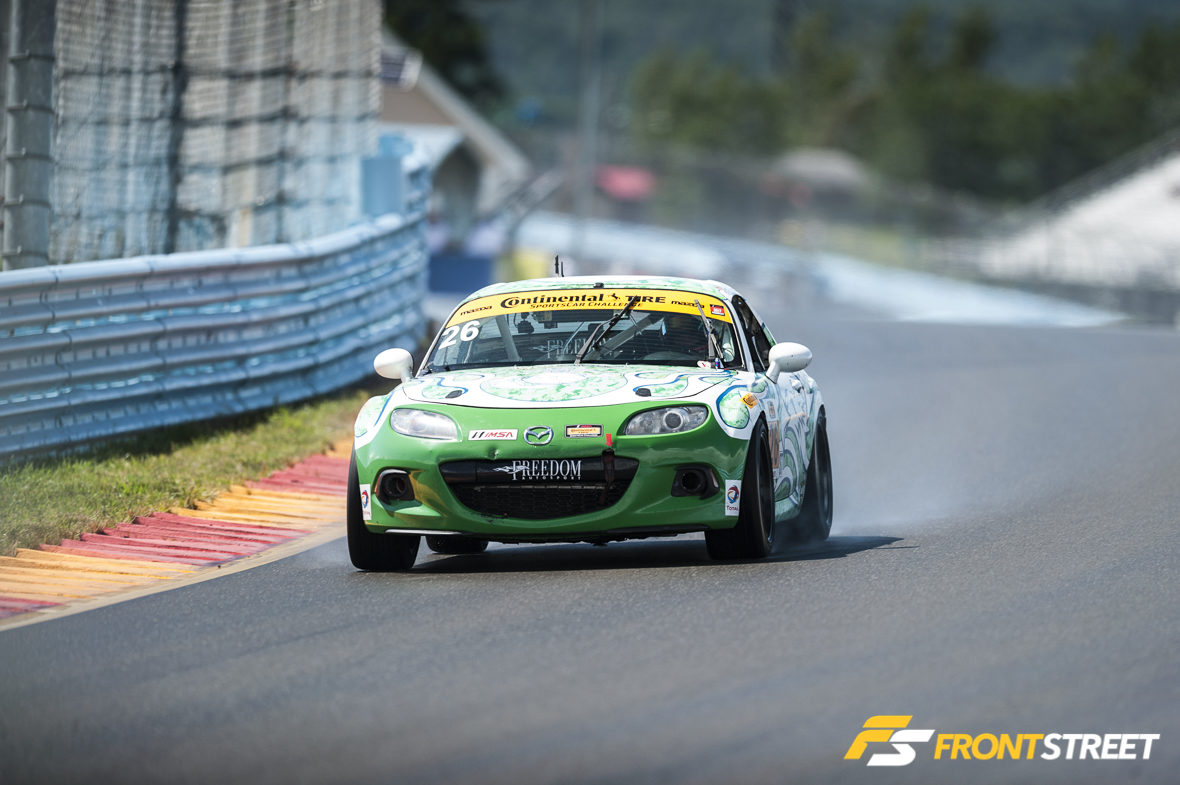
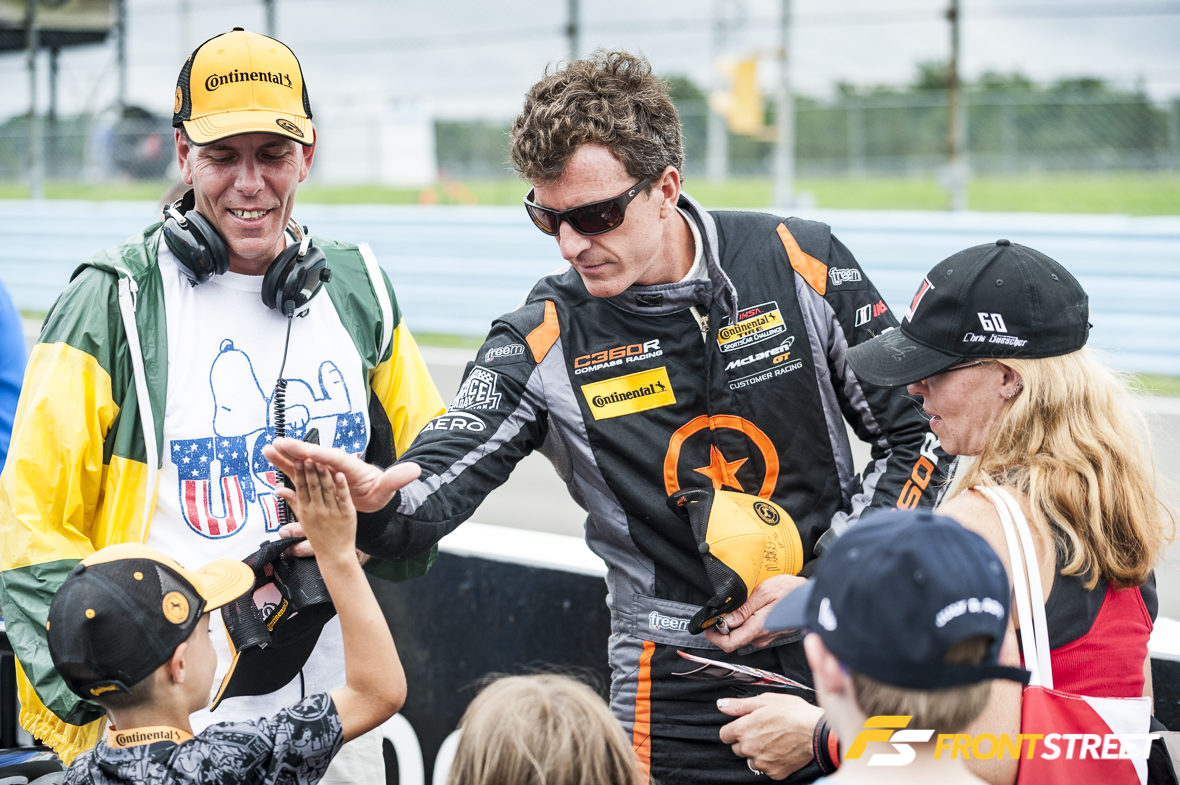
IMSA Prototype Challenge presented by Mazda,
Porsche GT3 Cup Challenge
But with every precaution taken, racing in the rain presents its challenges—heavily to racers of Prototype machines, which rely on dry conditions and aerodynamics to achieve peak performance, and especially to MPC-class competitors of the Prototype Challenge series who piloted open-cockpit Elan DP02s in some of the heaviest rain of the week.
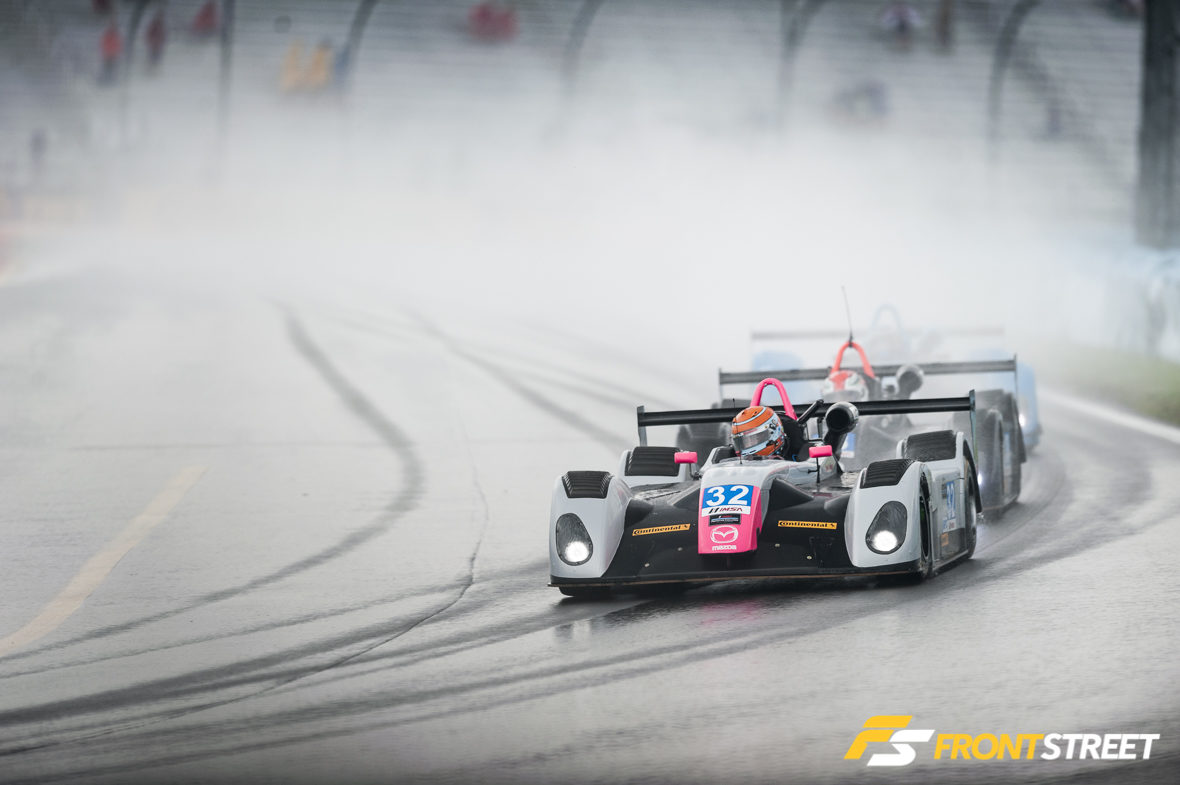
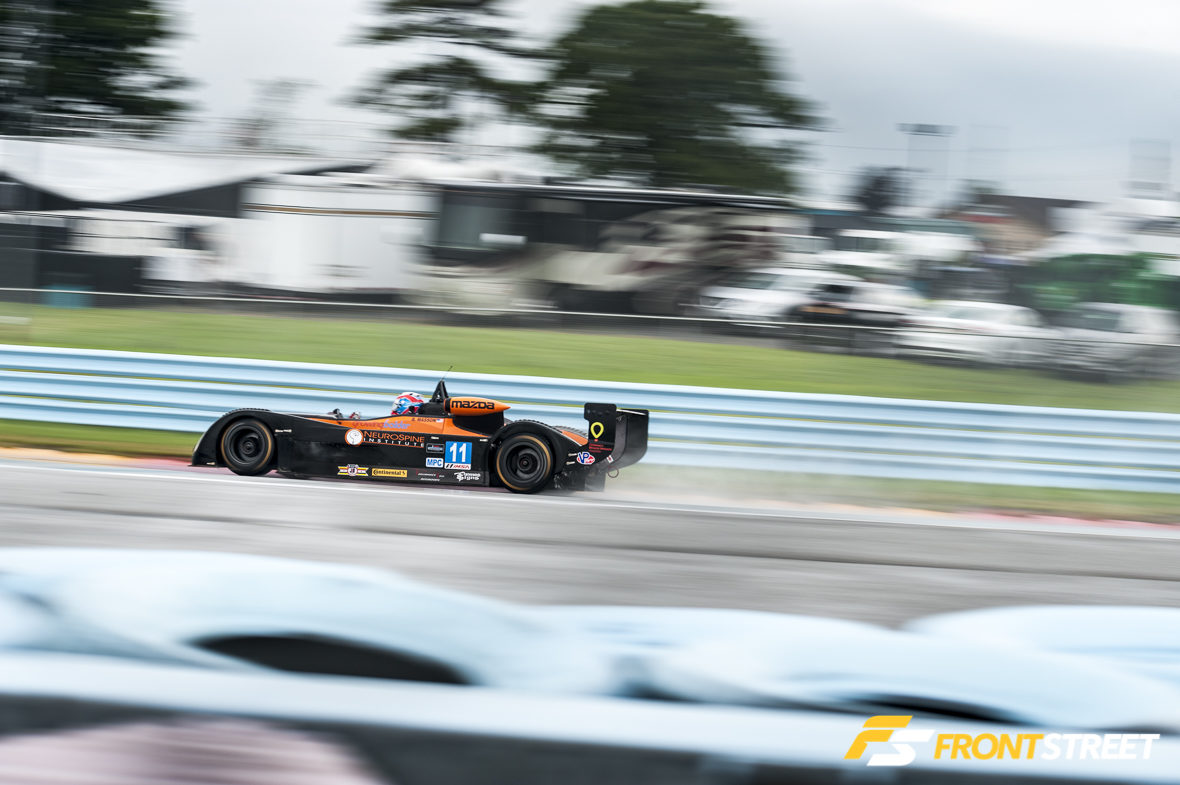
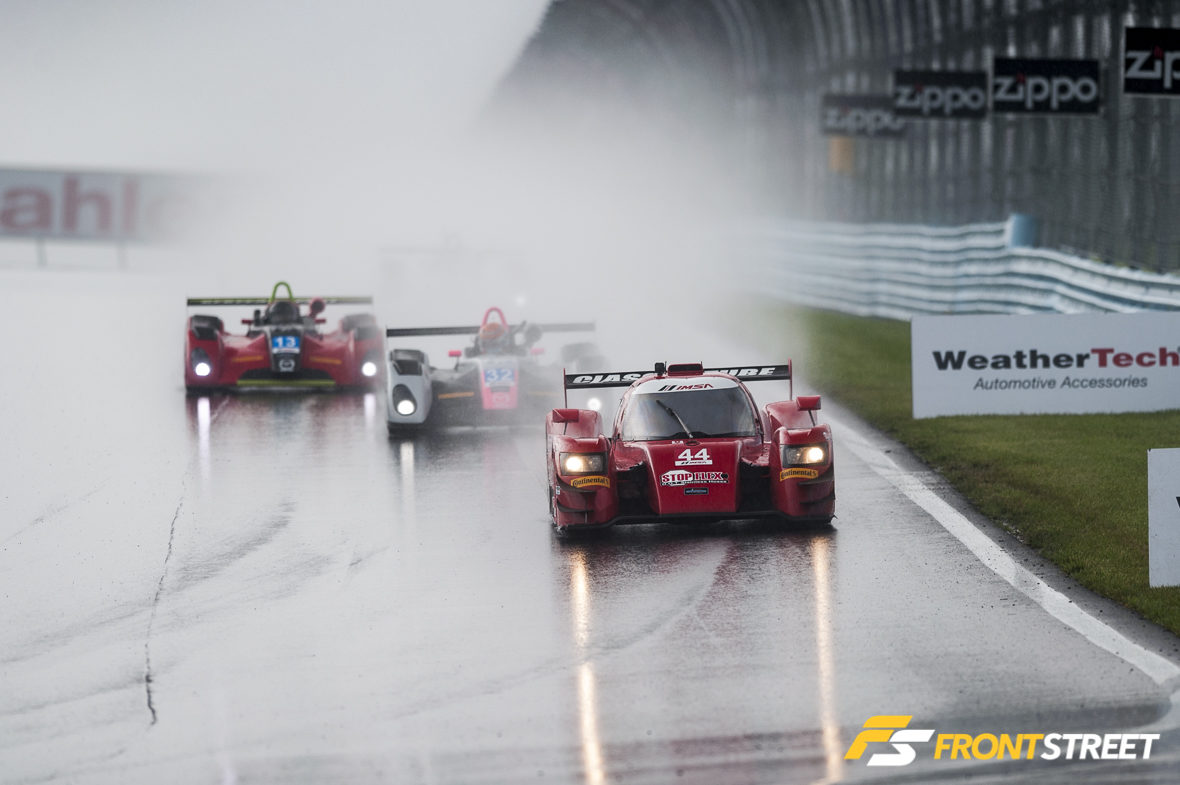
Even intermittent rain can be as dangerous, or more so. Watkins Glen’s 11-turn configuration spans 3.4 miles over a wide footprint, and it wasn’t uncommon for the track to be wet in some areas and dry in others throughout the week—meaning lots of uncertainty for drivers.
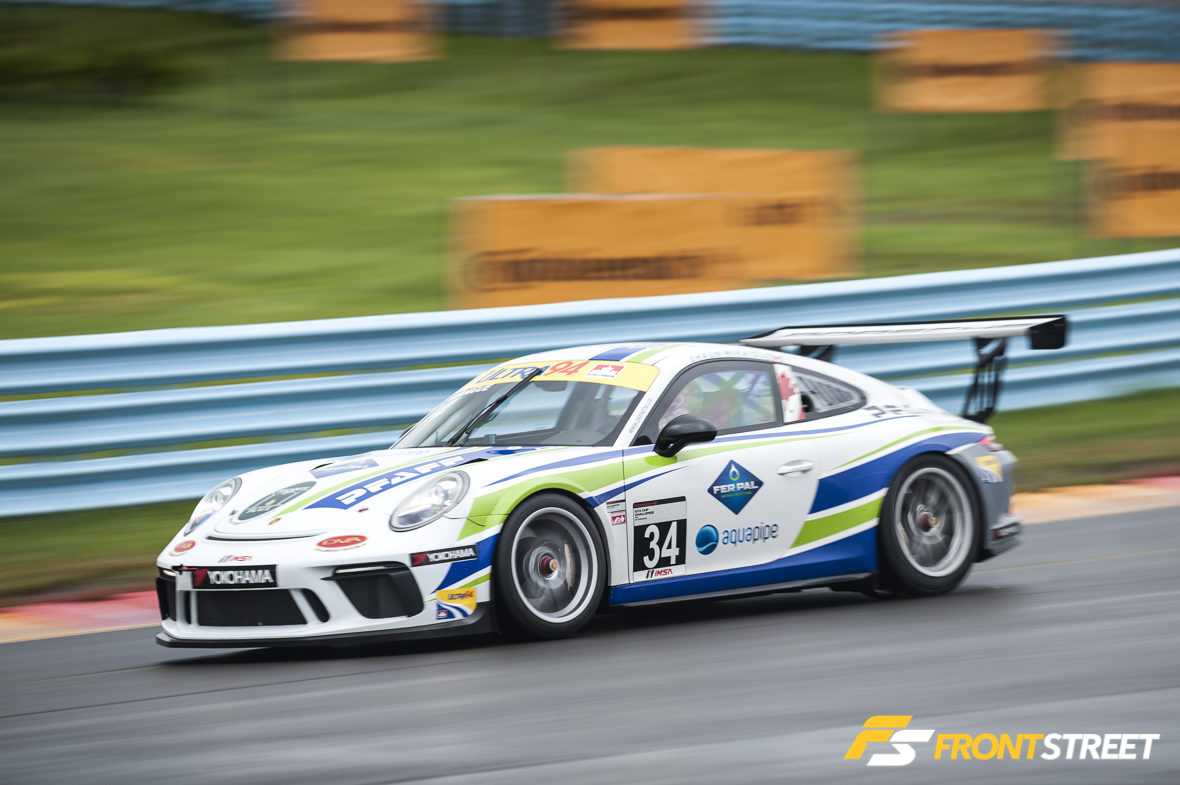
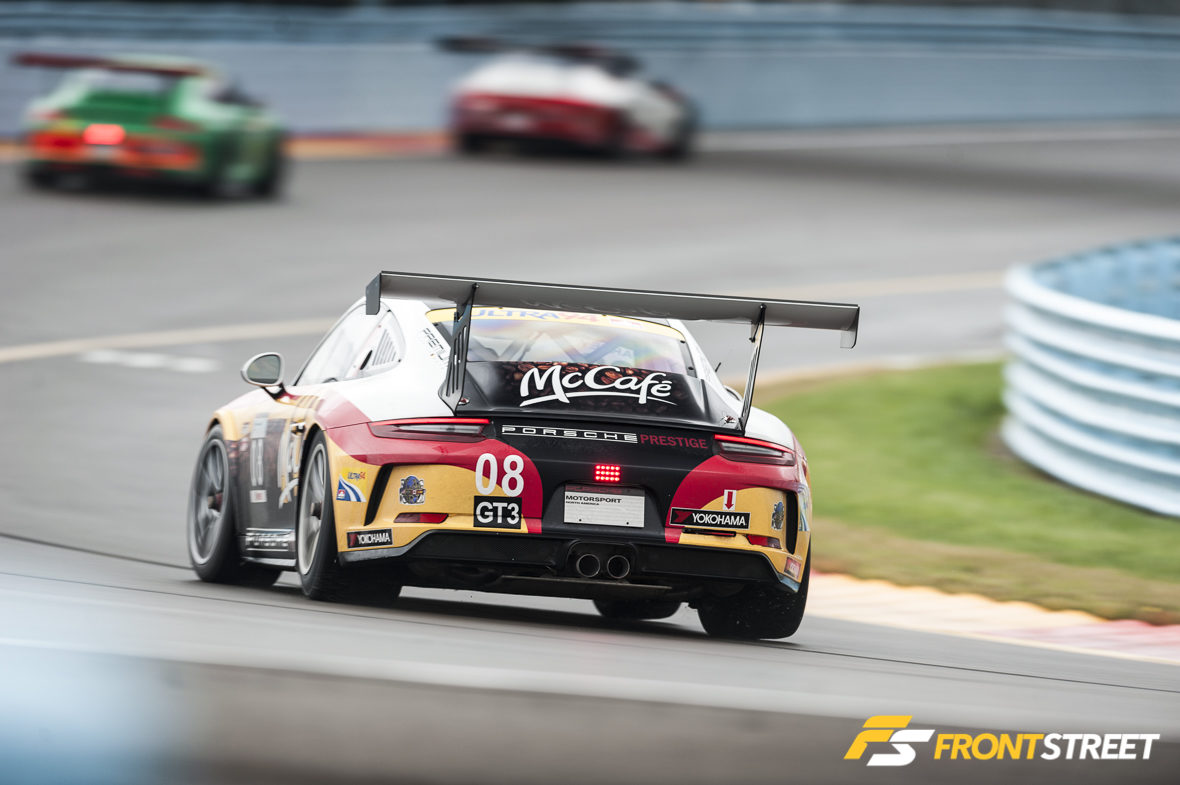
Even when conditions were mostly dry danger reared its head, beginning in Porsche GT3 Cup’s first of two races on Friday, when two racers jockeying for position contacted the outside wall before Turn 4 and came to rest in a part of the track that was between flagging stations and blind to competitors exiting the uphill esses. A total of 10 cars smashed into each other, with five racers being cleared by infield medical teams and another four being transported to area hospitals, where they were either released upon further evaluation or treated for non-life-threatening injuries.
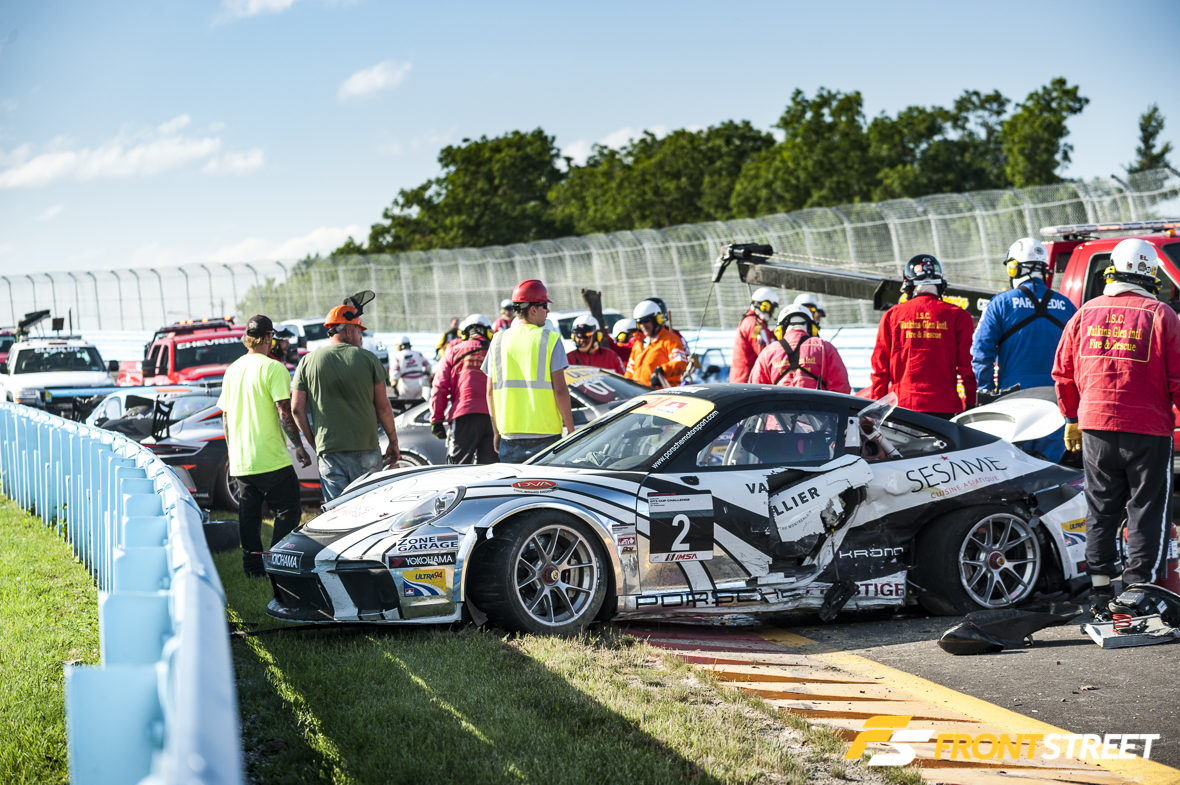
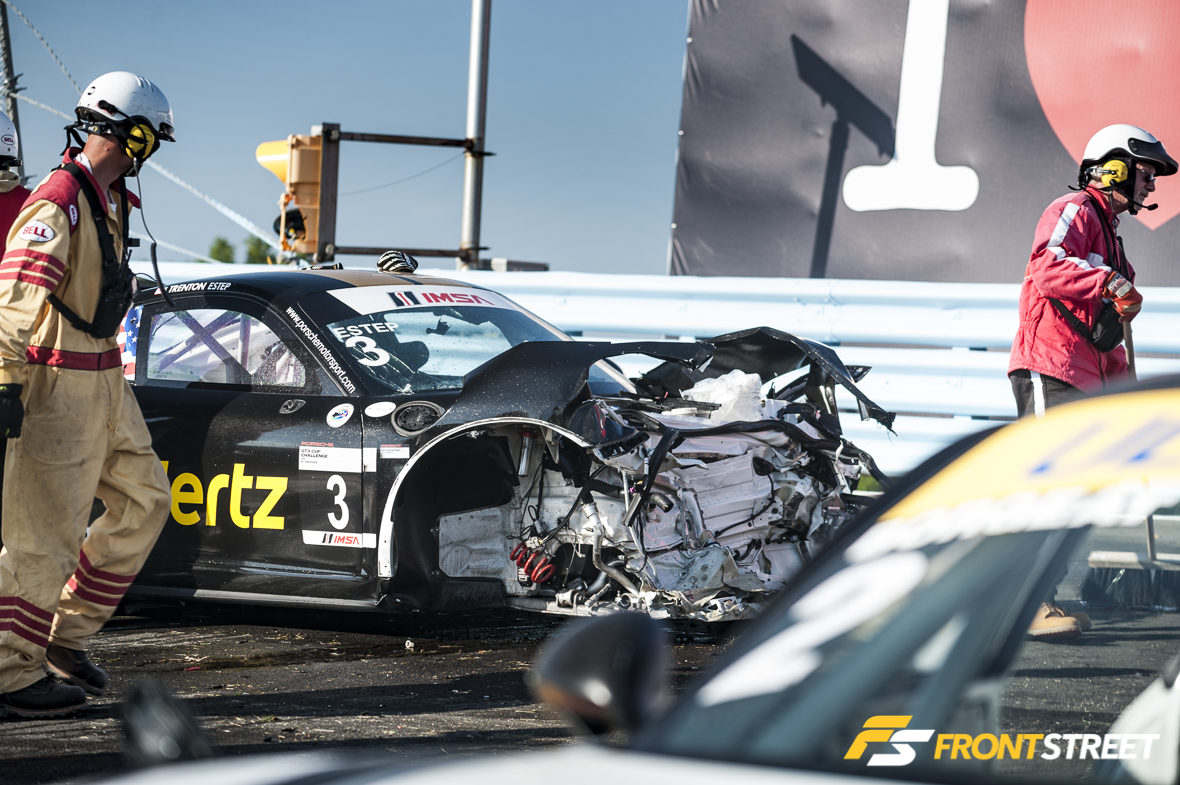
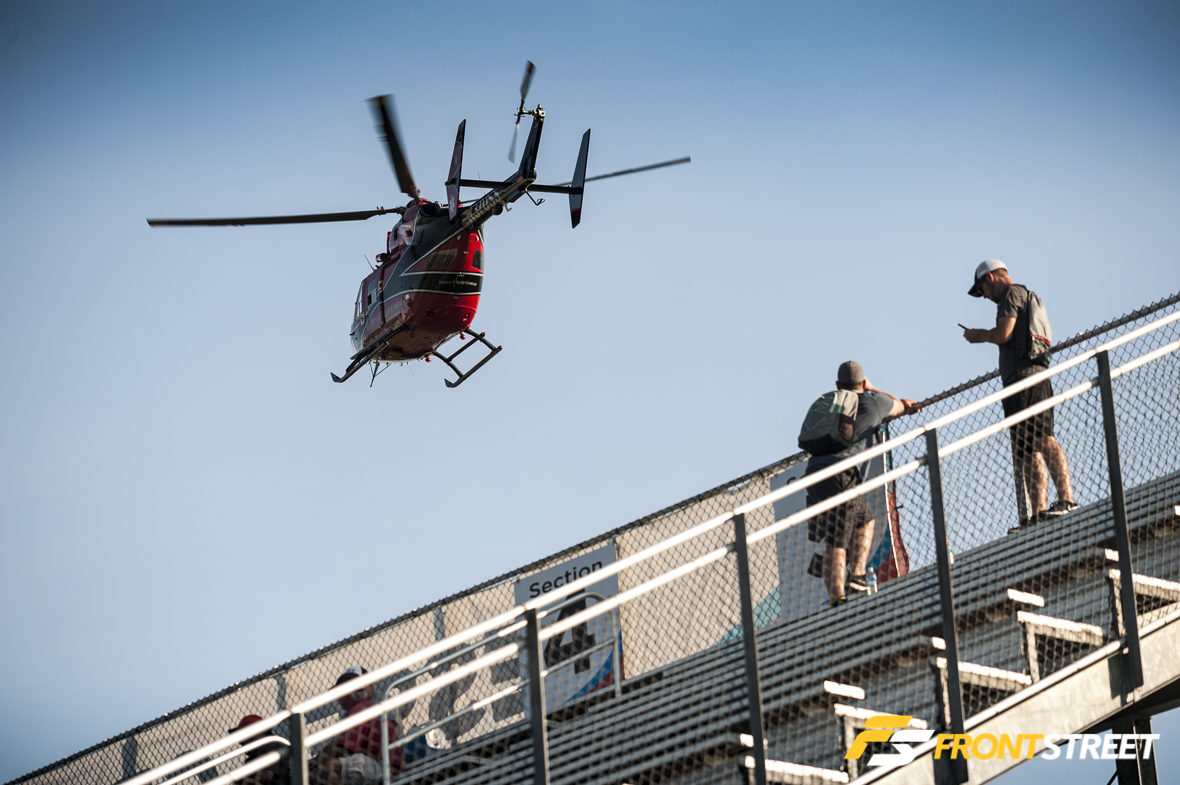
The crash was significant, but the cars’ safety, and the response by field crews and medical teams on site was impressive. Racing is dangerous let’s not forget. But it’s a lot less so when the necessary precautions are respected and followed, as they were here.
Continental Tire 120
The Sahlen’s Six Hours of The Glen also hosted the Continental Tire 120, a two-hour race for competitors of Continental Tire Sportscar Challenge GS and ST classes. In a Friday afternoon session with mixed sun and rain, COTA top-qualifier and race winner Paul Horton and the No. 76 C360R McLaren GT4 again won the pole in GS competition, setting the bar at 1:57.578 seconds around The Glen, in the process resetting the previous lap record of 2:00.514 set last year. The ST class record was also reset in qualifying, when Nick Galante in the No. 17 RS1 Porsche Cayman laid down a 2:07.583 lap—0.17 seconds quicker than the previous record set in 2014.
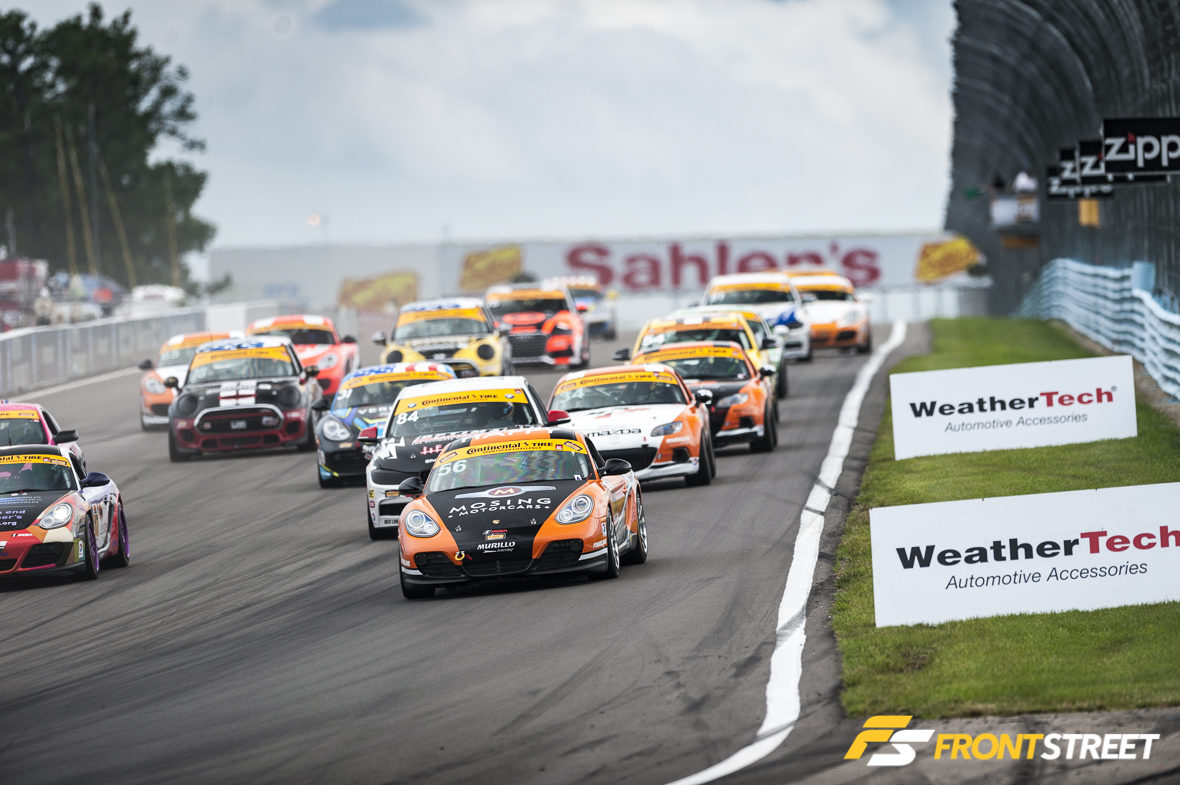
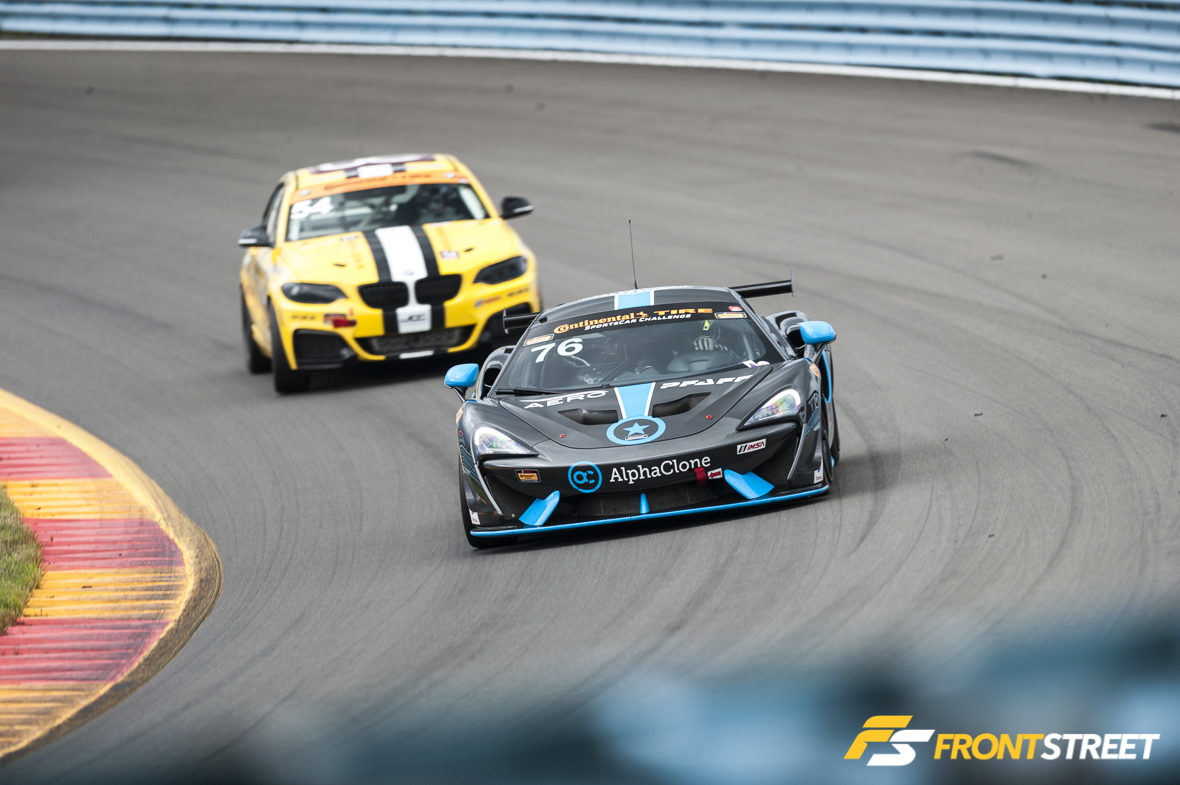
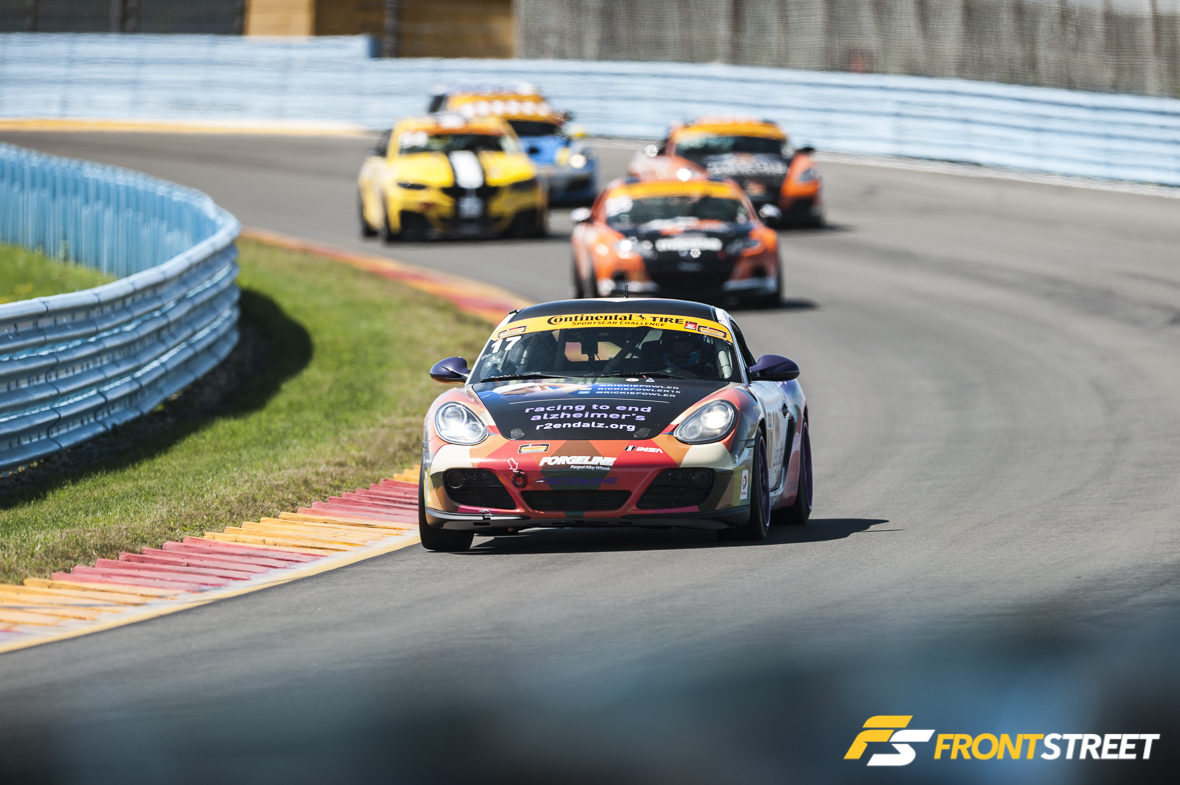
Saturday’s race also saw a mix of sun and rain, as well as yellow and red flags, but thankfully no major collisions. The No. 76 C360R McLaren led most of the race in GS class, but things changed when an error by co-driver Matt Plumb allowed the team of Al Carter and Steven Phillips in the No. 99 Automatic Racing Aston Martin Vantage to assume the lead.
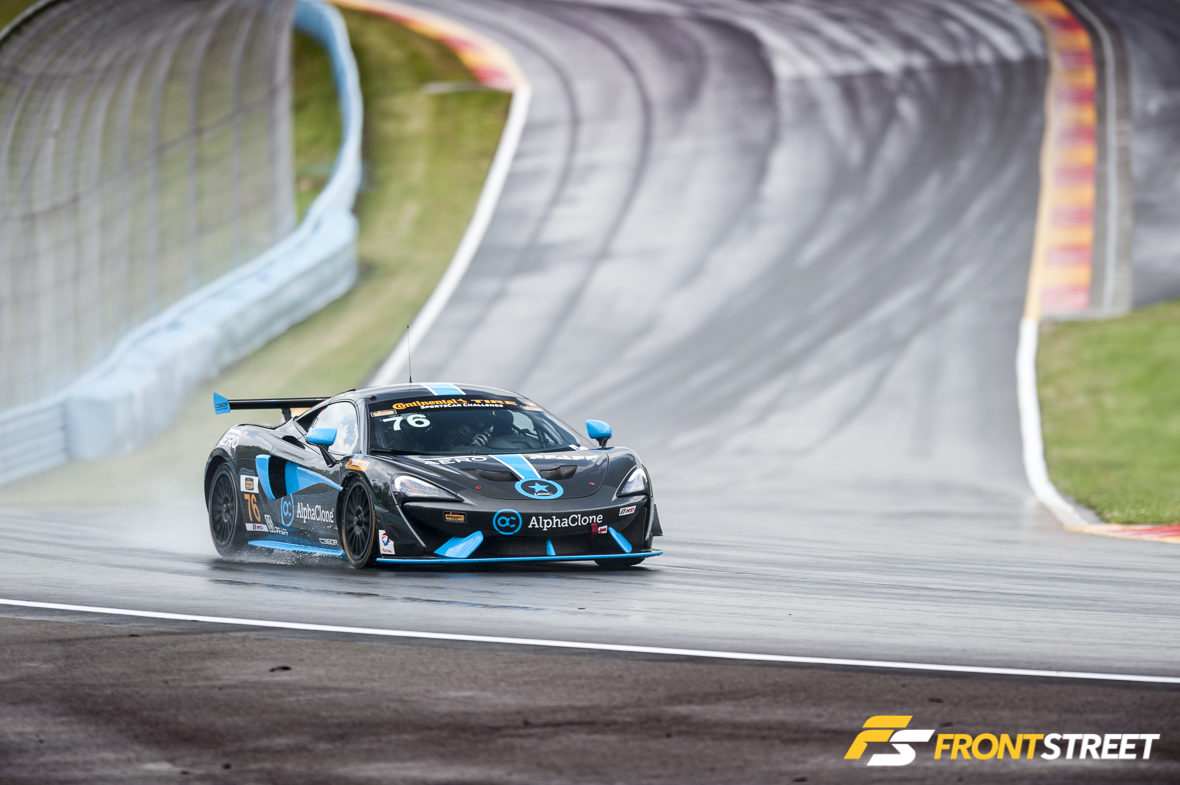
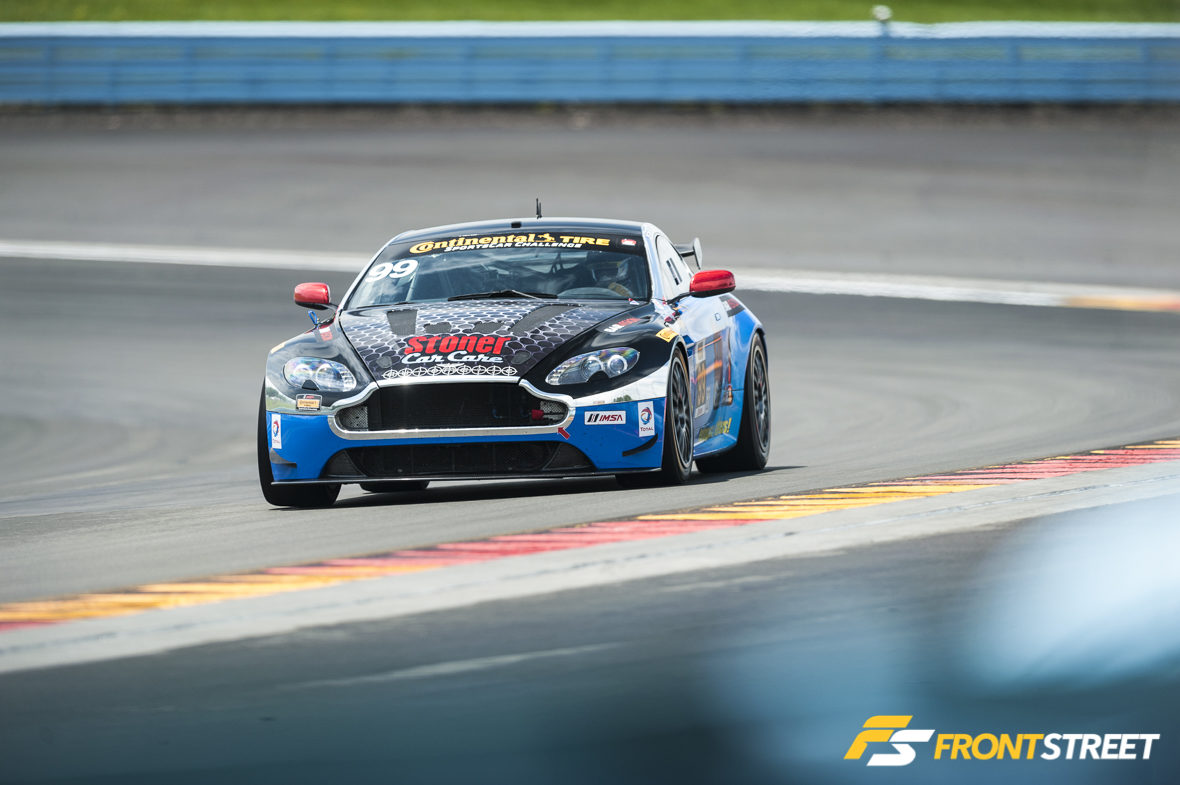
In third at that time was the No. 59 KohR Ford Mustang team of Jack Roush Jr. and Dean Martin, who—with Martin at the wheel and only two laps remaining—challenged and eventually made contact with Carter and the Aston, who veered off course allowing Martin to take the Mustang into the lead and eventually across the finish line first. The No. 76 Plumb/Holton McLaren team claimed third, their teammates Nico Rondet and Mathew Keegan in the No. 77 C360R McLaren took second, and Carter/Phillips and the No. 99 Aston Martin landed in seventh.

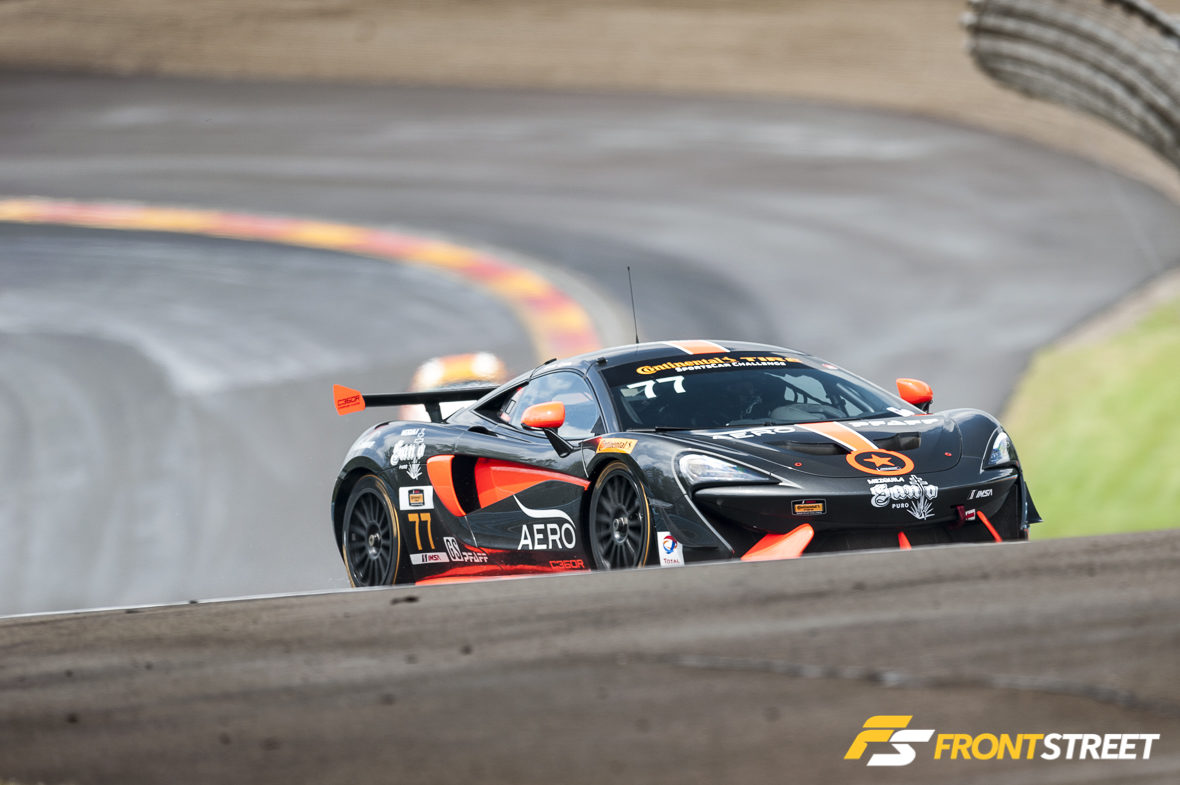
ST-class competition saw driver Mat Pombo (co-driver: Derek Jones) in the No. 73 JCW Team Mini fend off his brother and teammate Mark Pombo (co-driver: Jared Salinsky) in the No. 52 JCW Team Mini to take the win, with the No. 56 Murillo Racing Porsche Cayman team of Jeff Mosing and Eric Foss taking third.
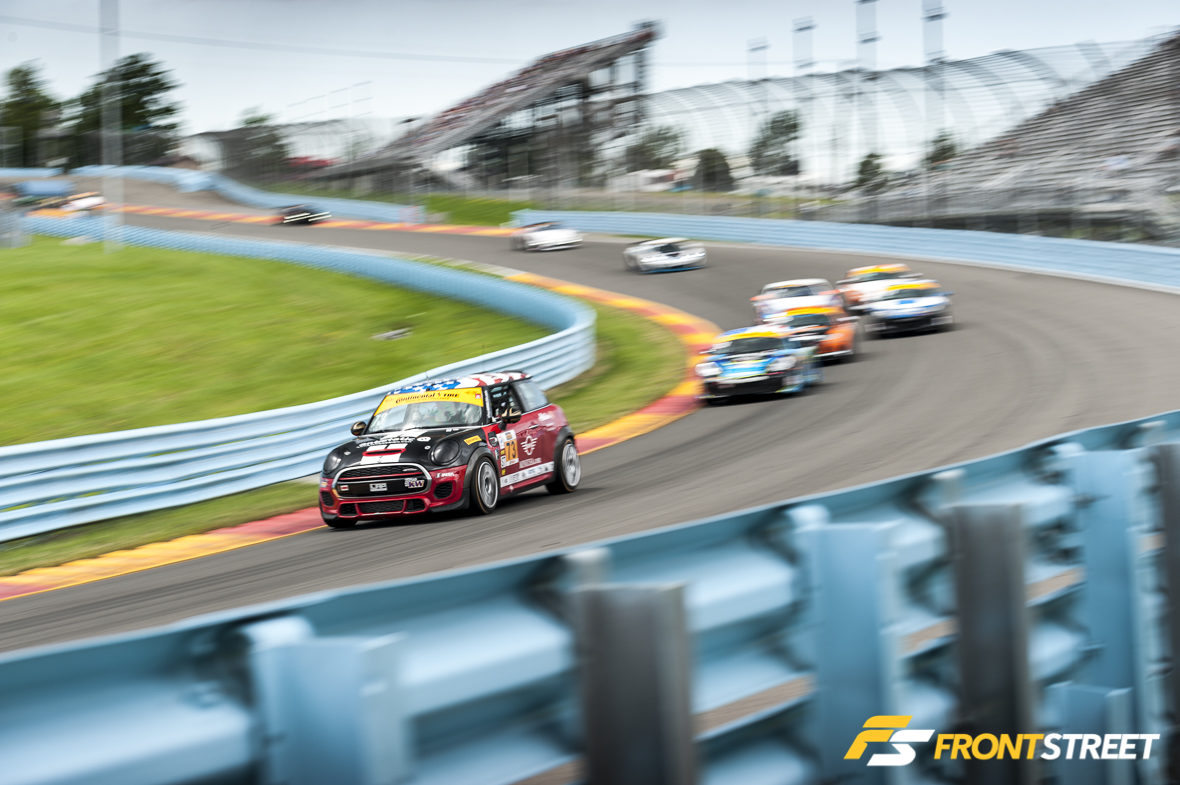
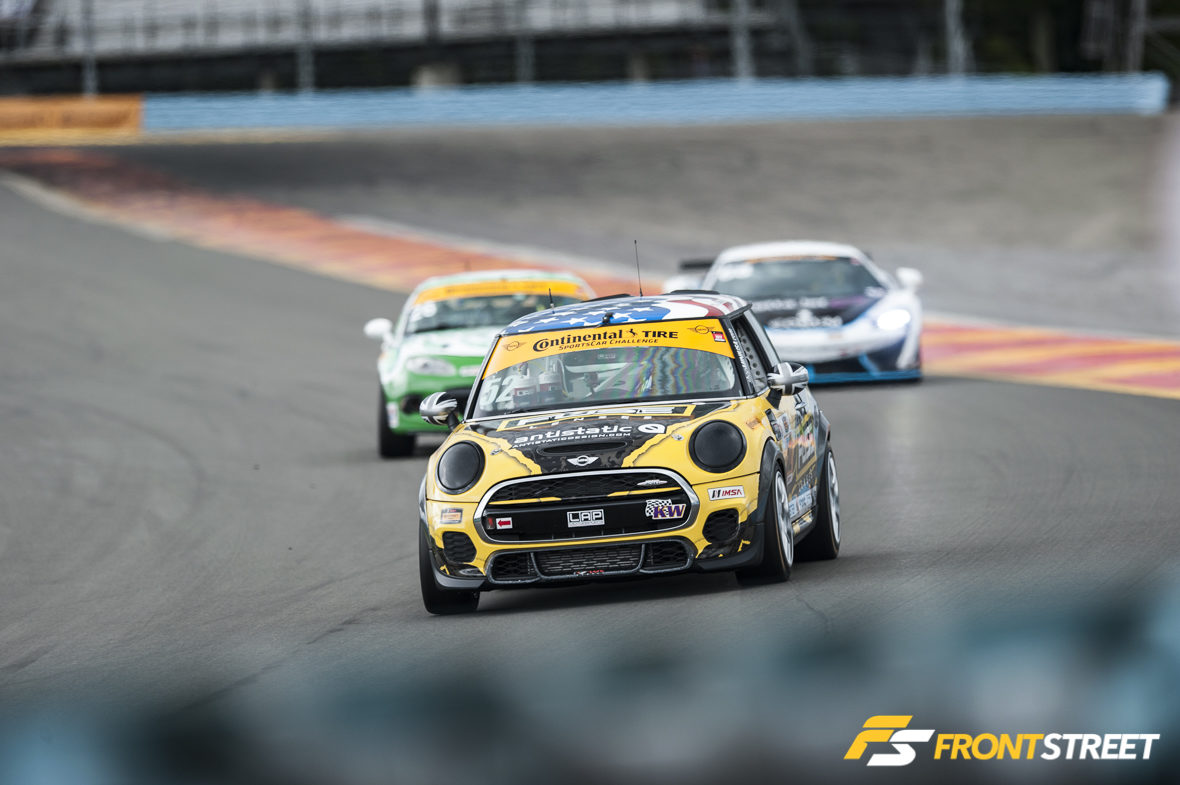
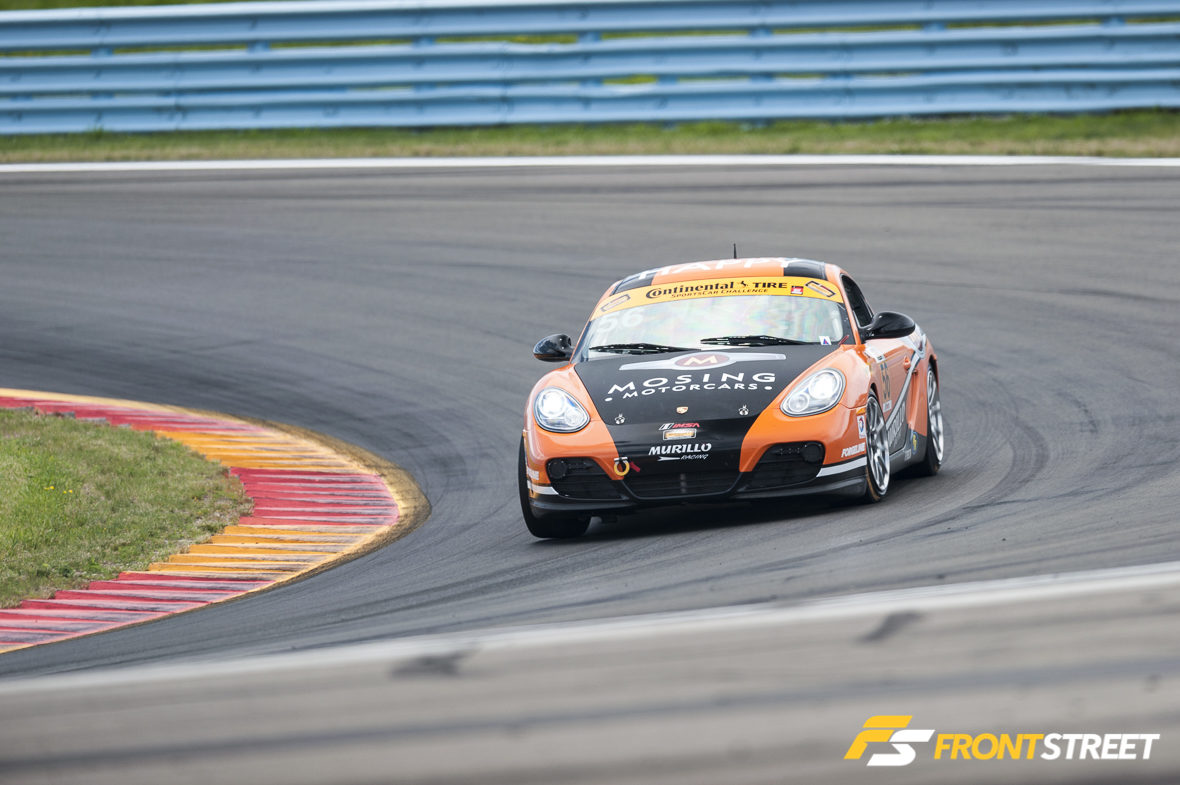
As one of the drivers involved in the Porsche Cup crash, Mosing was honored with extra cheers from fans and competitors, alike. Similarly was Mark Pombo, who was involved in a serious crash of his own five years ago, from which he’d spent the preceding four years recovering.

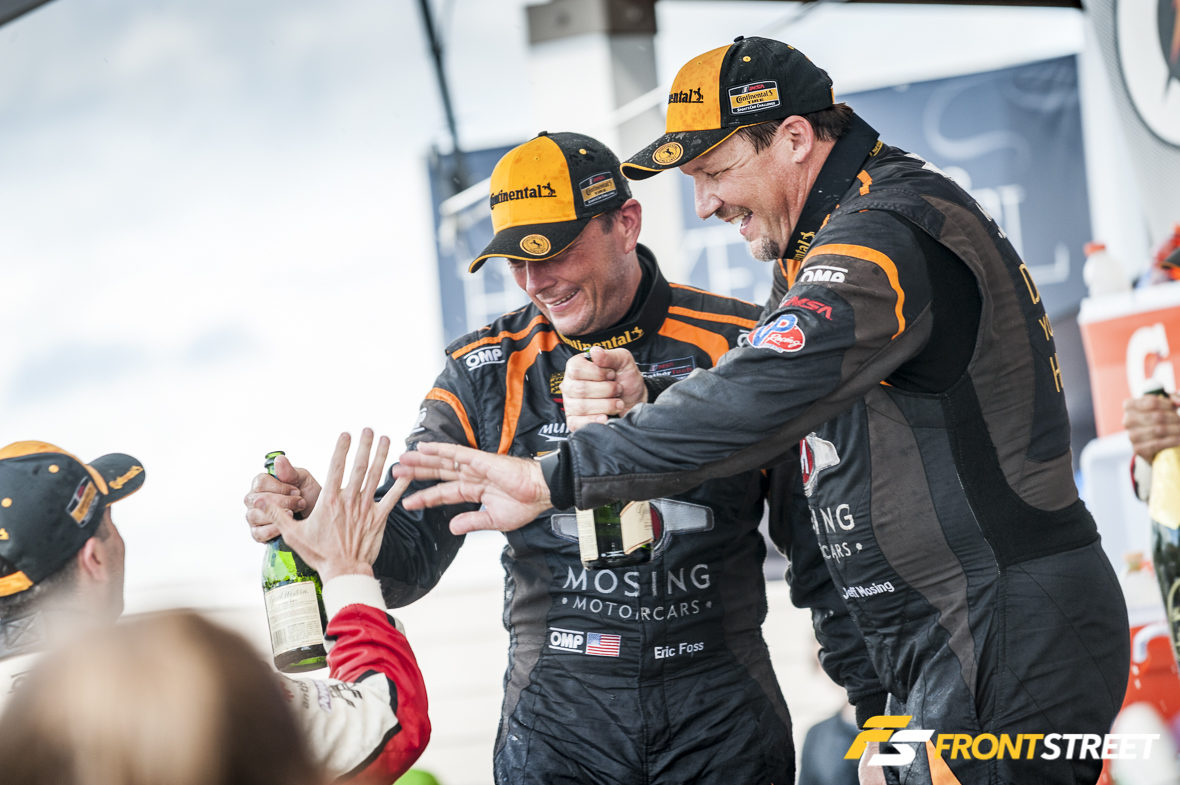
Lamborghini Super Trofeo
Comparatively cleaner were the week’s two races of the Lamborghini Super Trofeo series. Race number one was dominated by No. 16 Change Racing / Lamborghini Carolinas driver Richard Antinucci, who started from the pole after setting the pace in qualifying, and maintained his lead through the checkered flag of the 50-minute race. The victory added to Antinucci’s perfect season thus far, but in the second race his winning streak was broken by the No. 1 Prestige Performance / Lamborghini Paramus team of Riccardo Agostini and Trent Hindman, earning their first win of the season after Antinucci encountered problems during the race and finished a distant 16th.
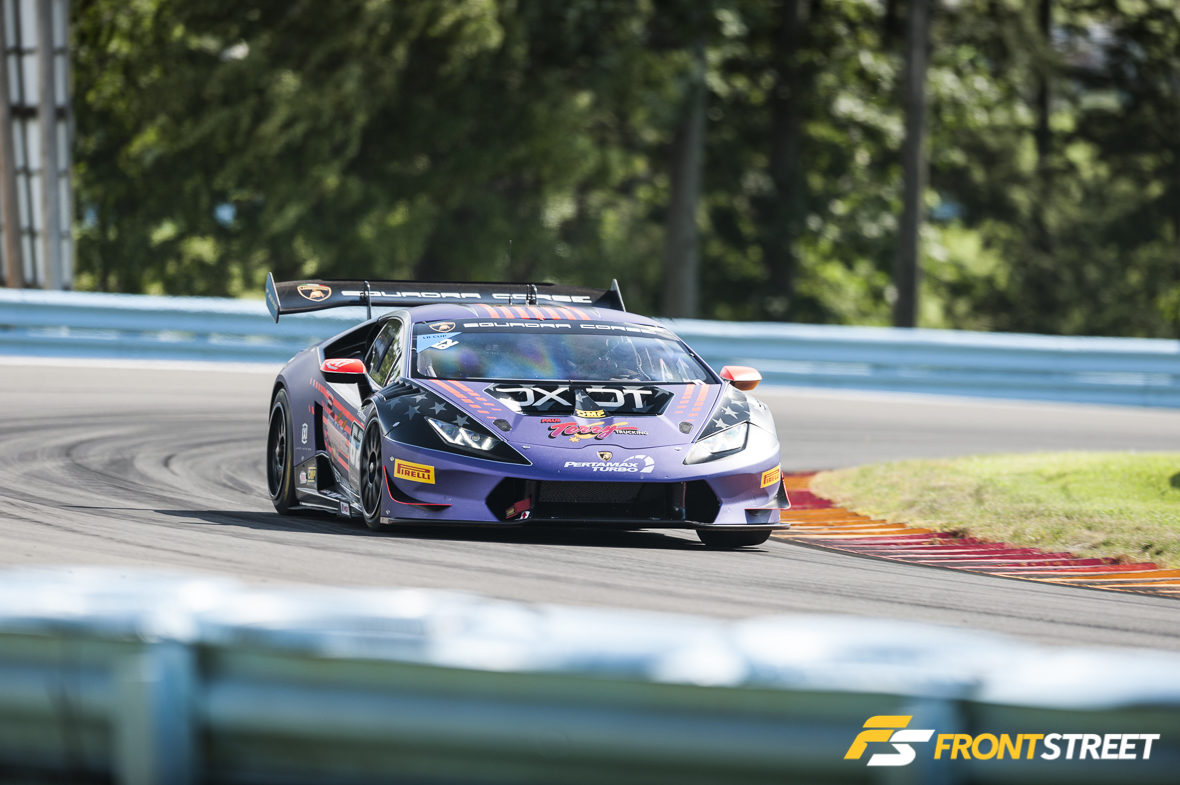
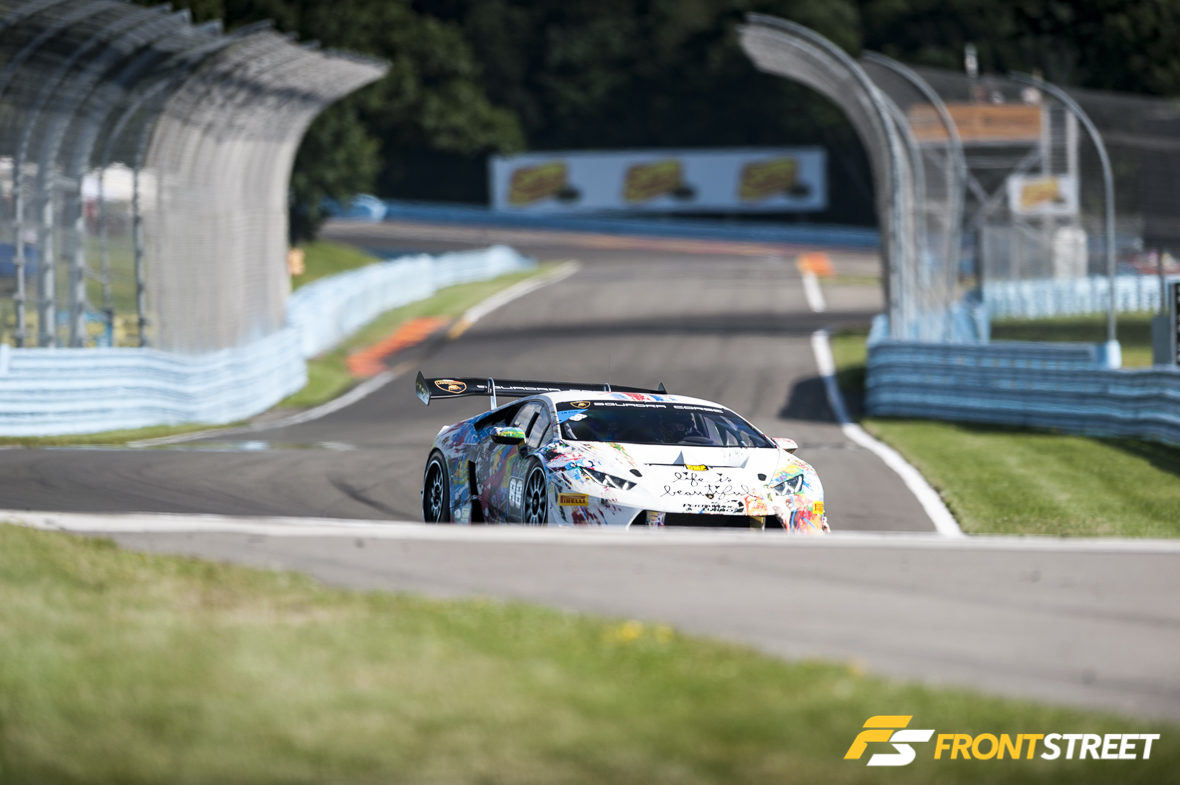
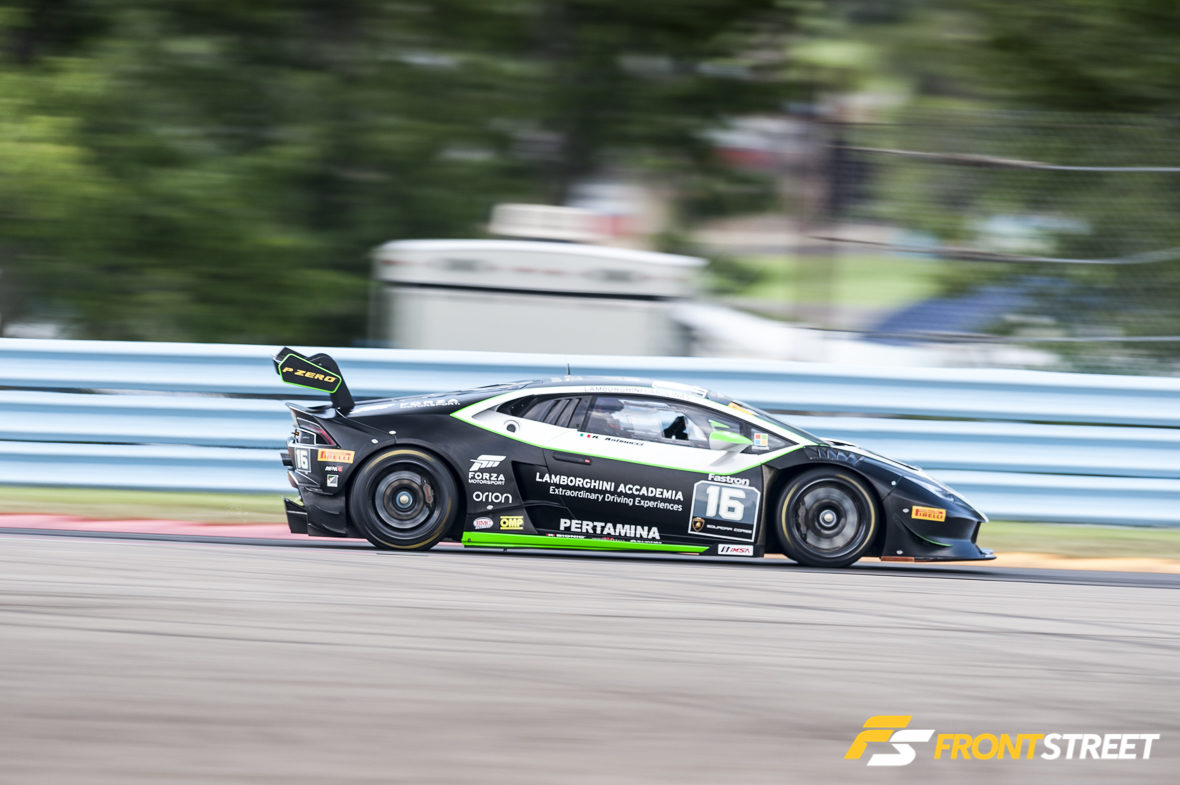
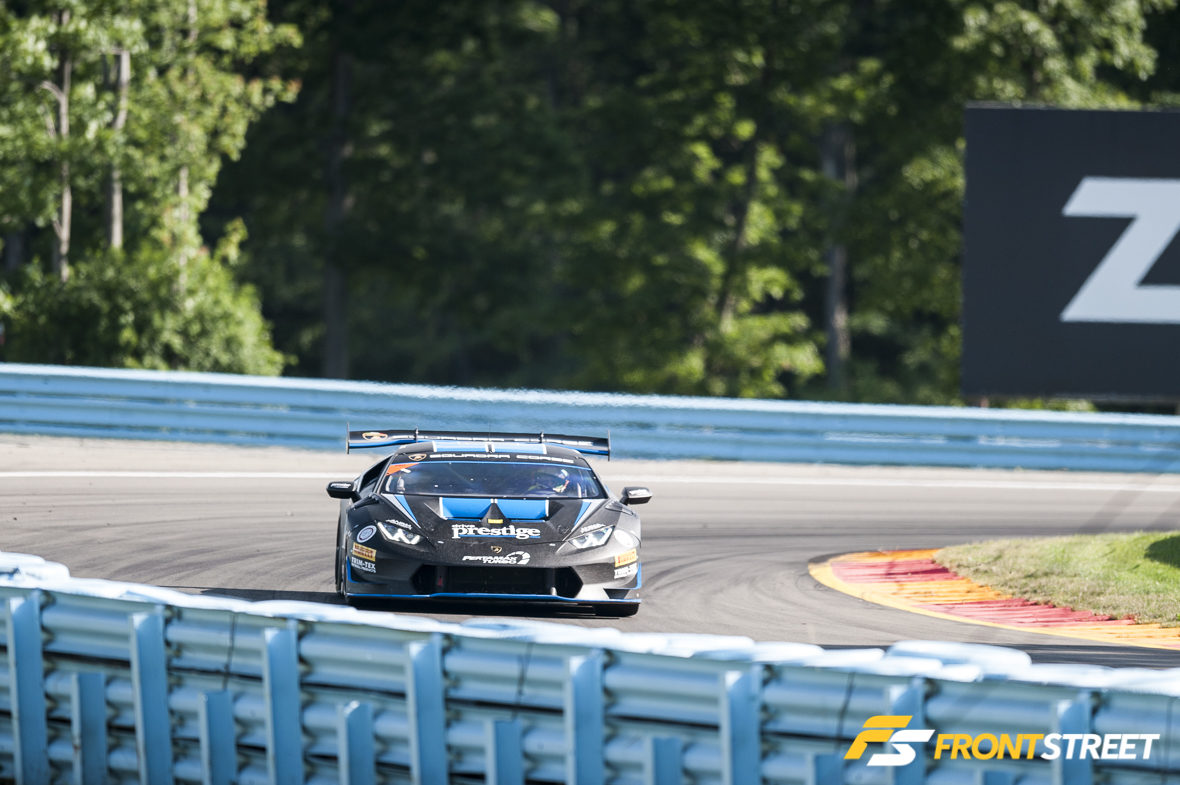
The second Lambo race of the week was also where Ashley Freiberg made history by becoming the first female to stand on the podium of any Super Trofeo race worldwide, when she piloted her No. 30 DAC Motorsports / Lamborghini Palm Beach car to a hard-fought third place finish.
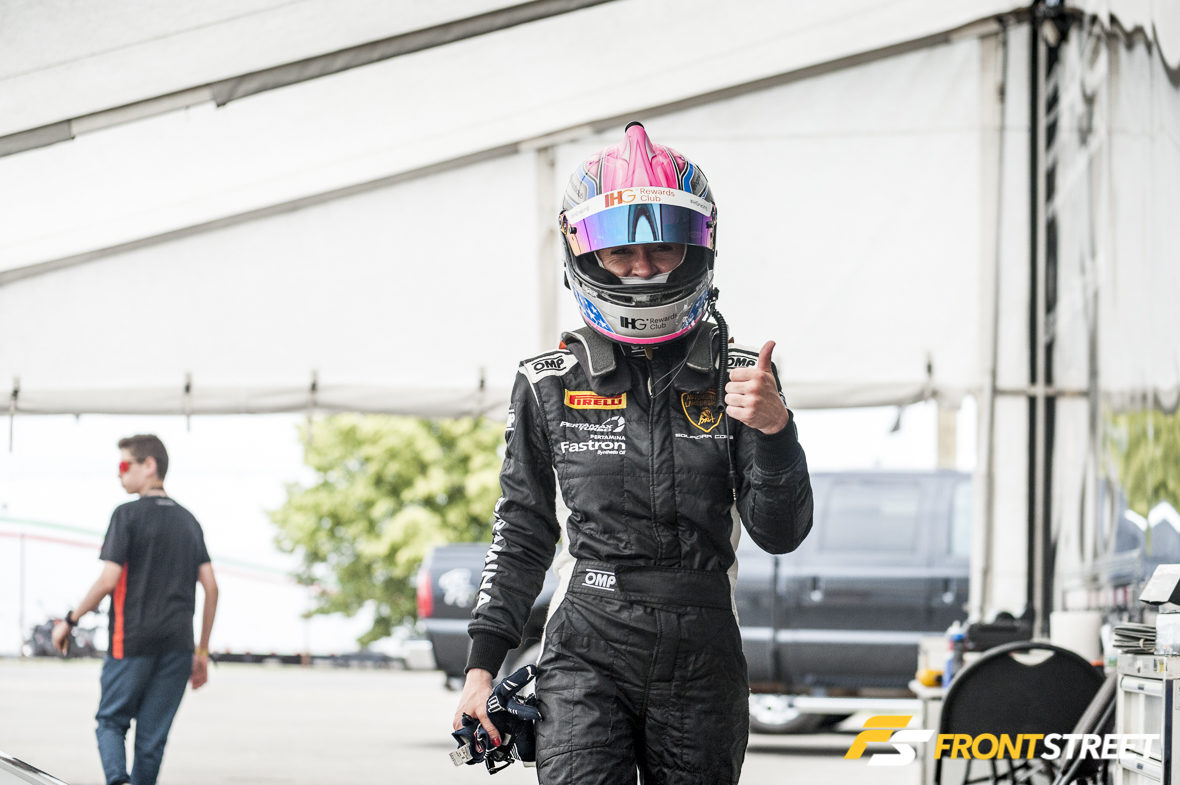
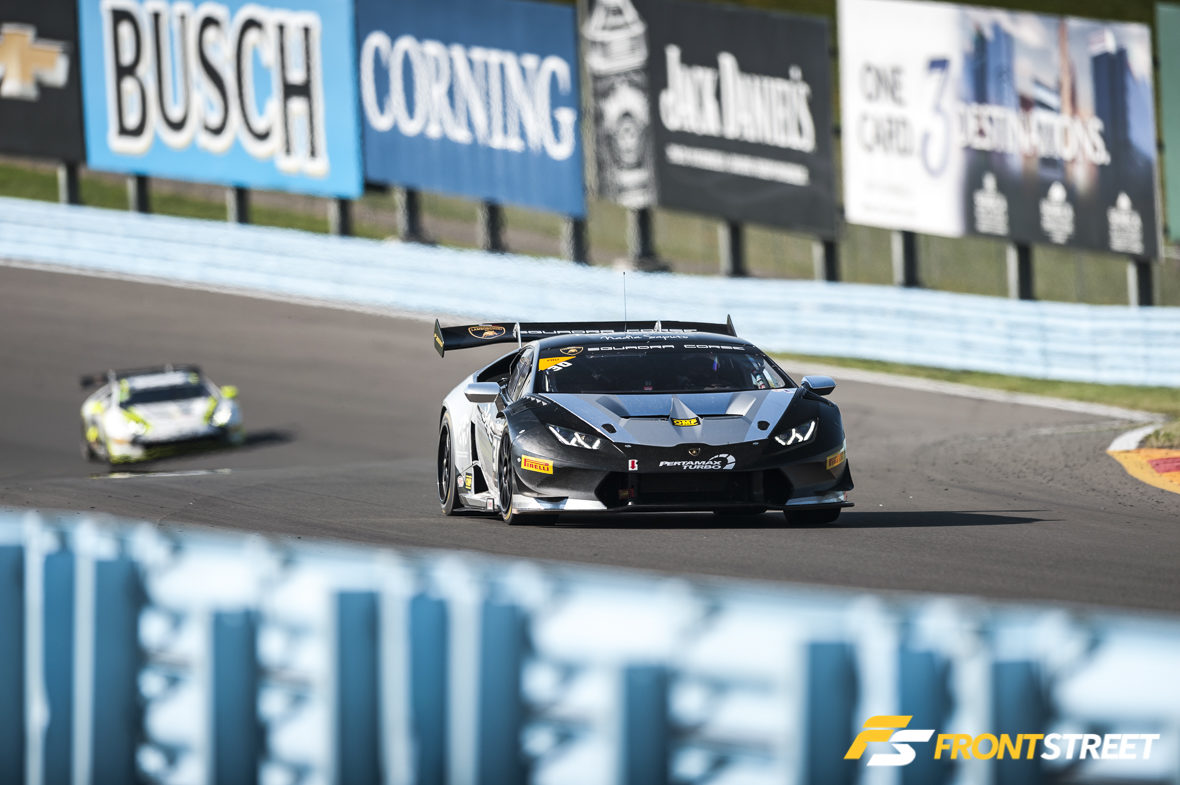
WeatherTech Championship
Of course, the main event was the WeatherTech Sportscar Championship’s six-hour endurance race for which the event is named. In addition to marking the halfway point of WeatherTech competition for the year, this was the third race of the Tequila Patron North American Endurance Cup, a four-event sub-competition of IMSA’s four enduros throughout the season, the last remaining one being IMSA’s season-ending 12-hour Petit Le Mans.
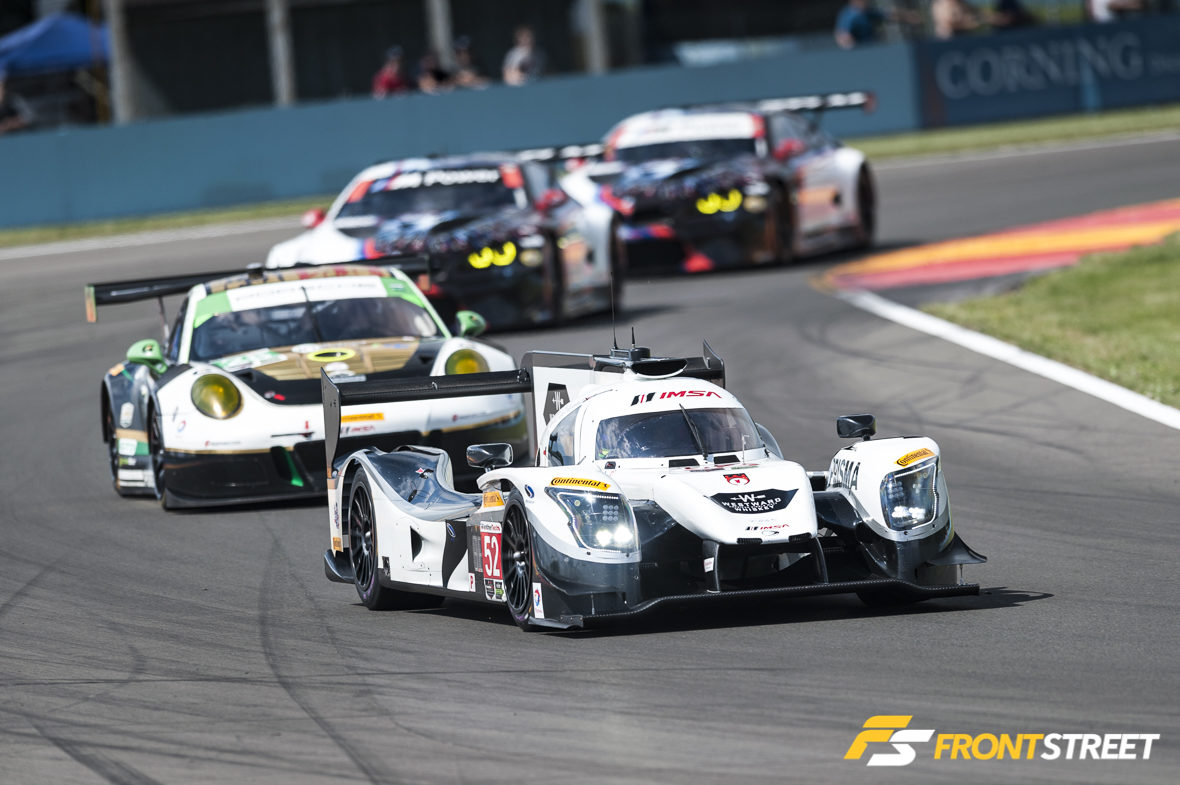
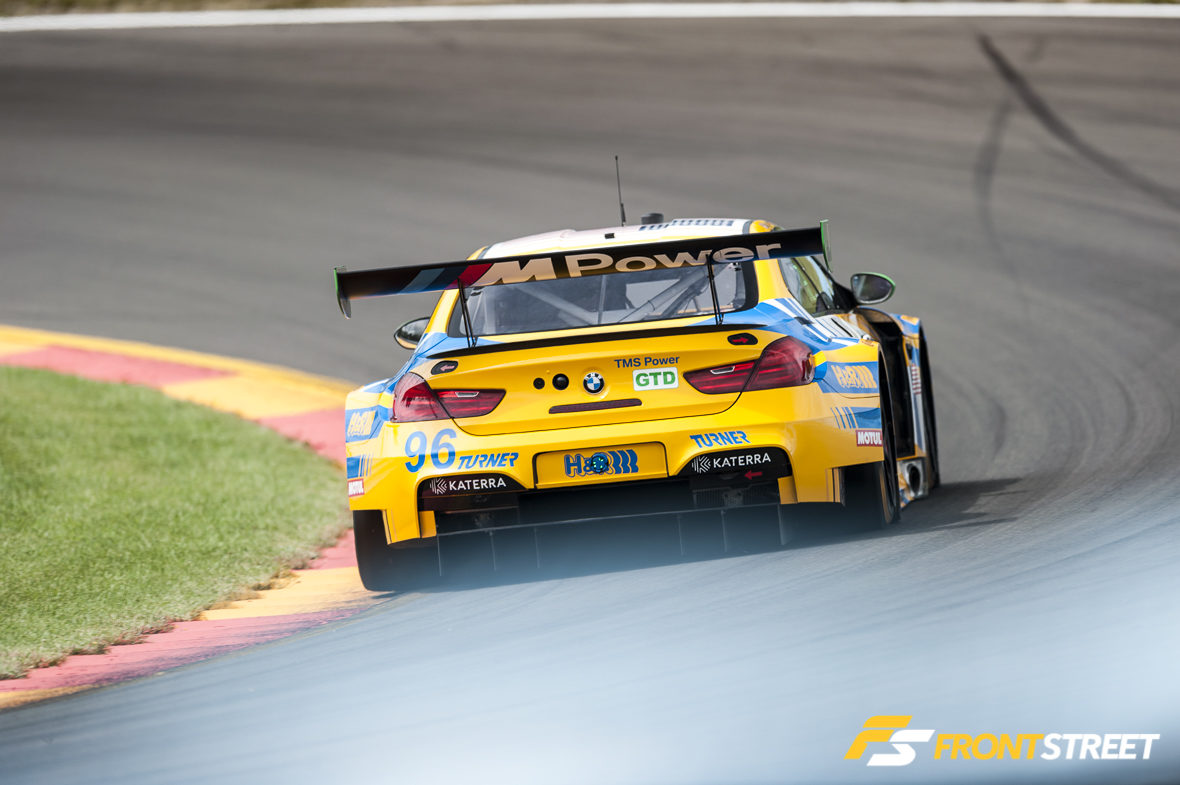
WeatherTech Practice sessions took place throughout Thursday, Friday and Saturday (as well as qualifying sessions on Saturday) with the race owning the schedule on Sunday. Fittingly, a mix of rain and sun met WeatherTech racers throughout practice and qualifying, but conditions improved on race day and allowed speeds and competition to reach their peak.
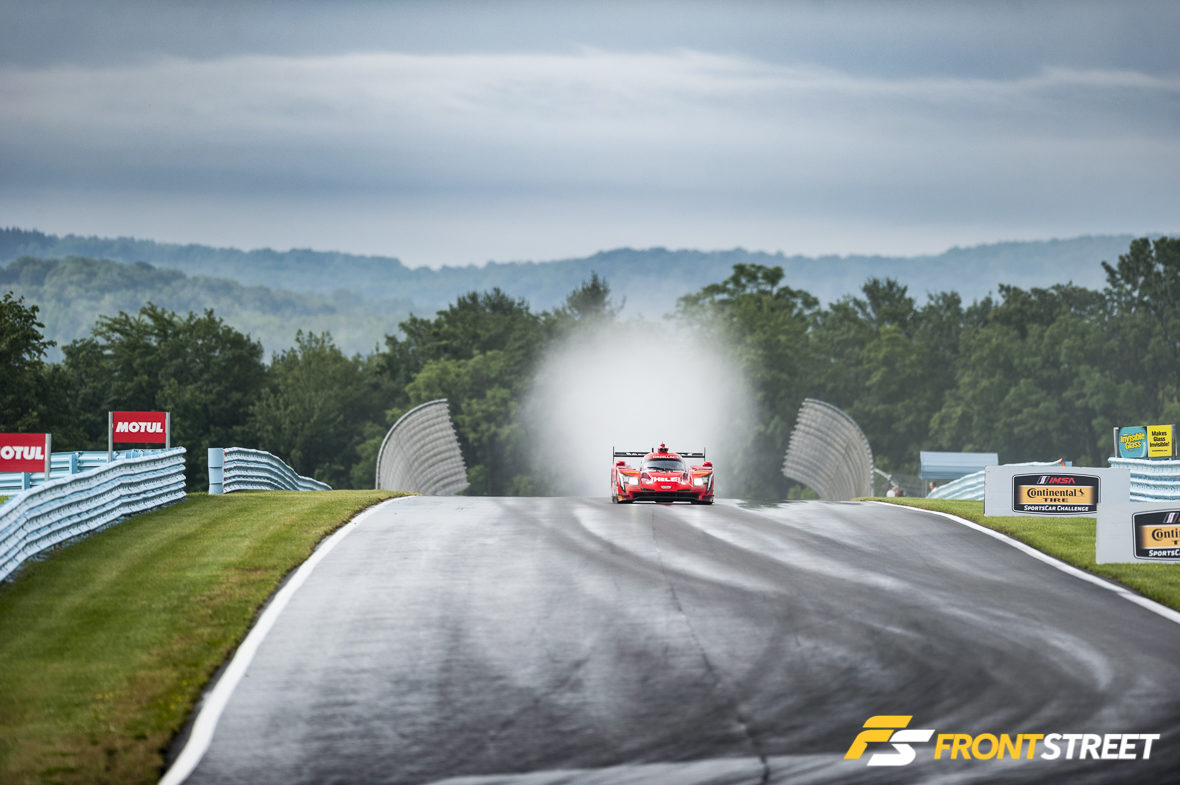
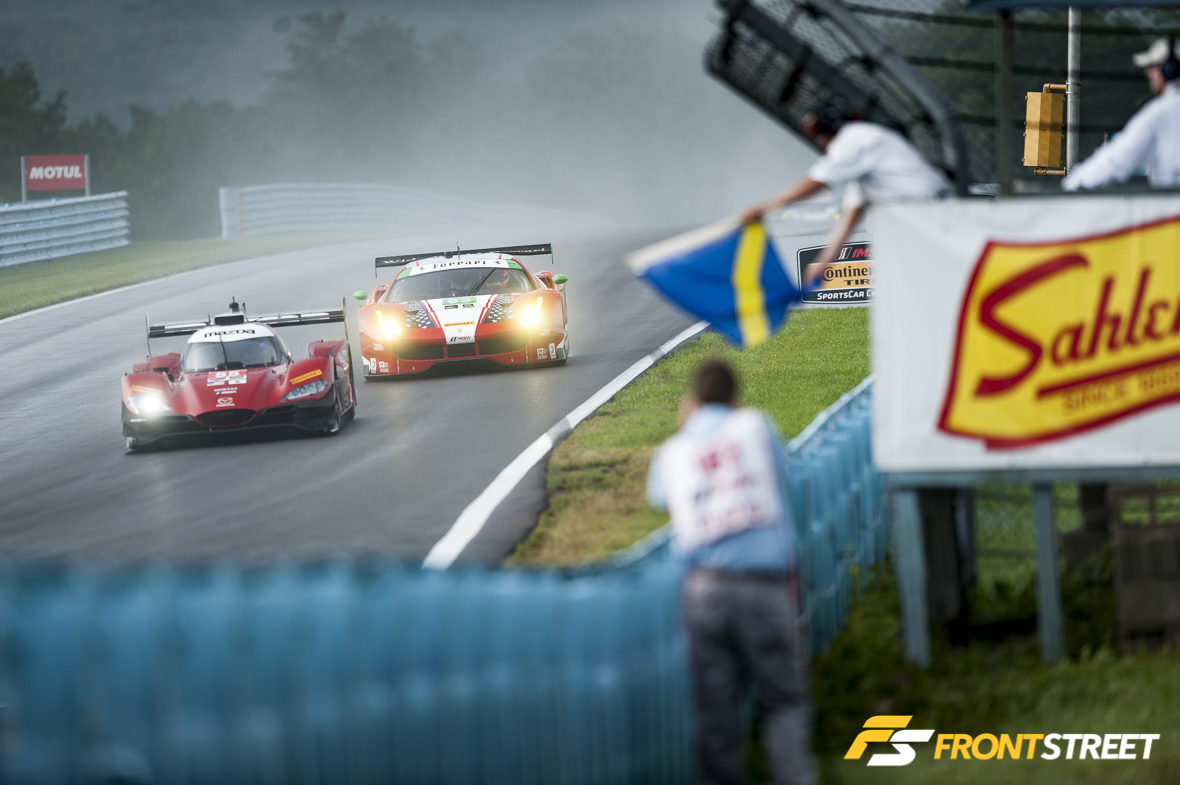
GTD Class
Of the four classes that race together in IMSA WeatherTech competition, GTD comprises the back of the pack. But don’t let that fool you into believing it’s not every bit as advanced and competitive as any other class. A total of 17 cars started the race in GTD (almost double that of any other class), led in championship points by the No. 33 Riley Motorsports Mercedes AMG team of Ben Keating and Jeroen Bleekemolen, who also entered the race leading the Patrón Endurance Cup with the addition of endurance teammate Mario Farnbacher.
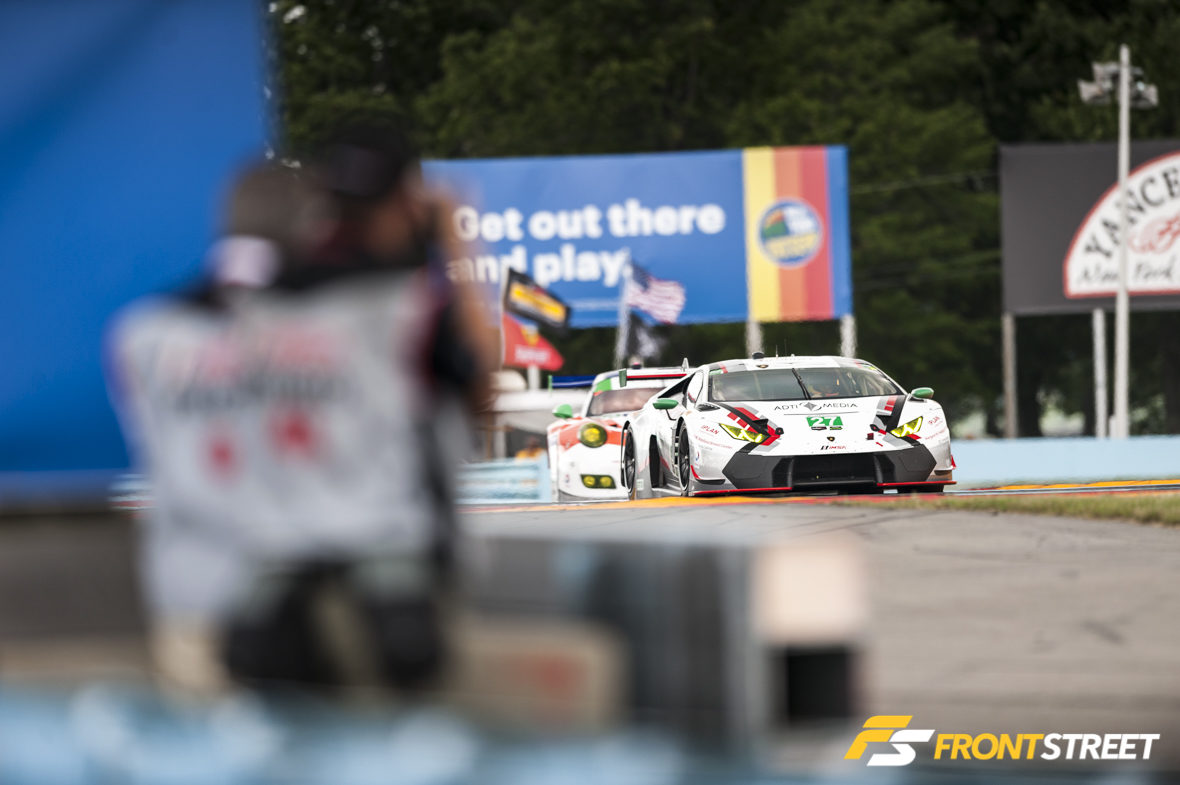
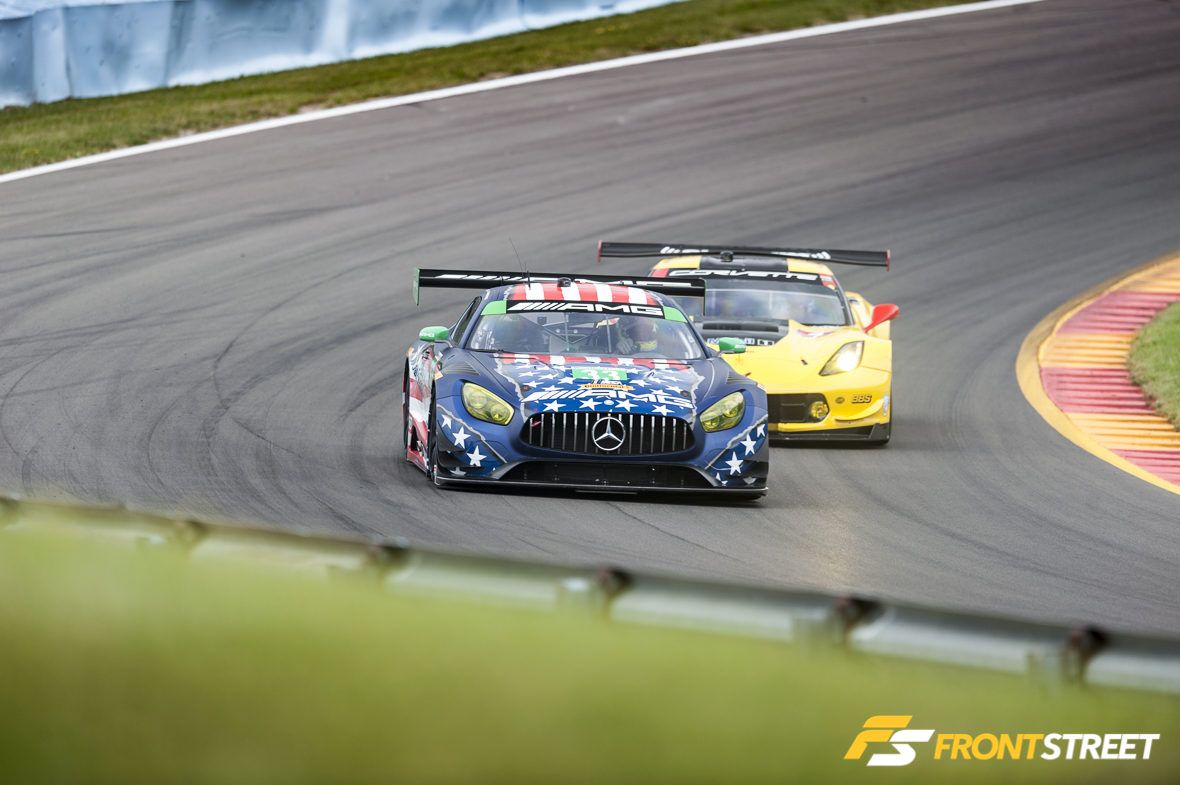
But qualifying fastest this time was the up-and-coming team of Andy Lally and Katherine Legge in the No. 93 Michael Shank Racing Acura NSX GT3, fresh off their first win in Detroit, with Lally clocking a 1:46.051 around the damp course. Just behind them were the No. 57 Stevenson Motorsports Audi R8 LMS GT3 and the No. 15 3GT Racing Lexus RCF GT3, which spun and sustained damage along with its No.14 sister car toward the end of the session—in separate incidents just seconds apart, in exactly the same spot at the top of off-camber Turn 9.
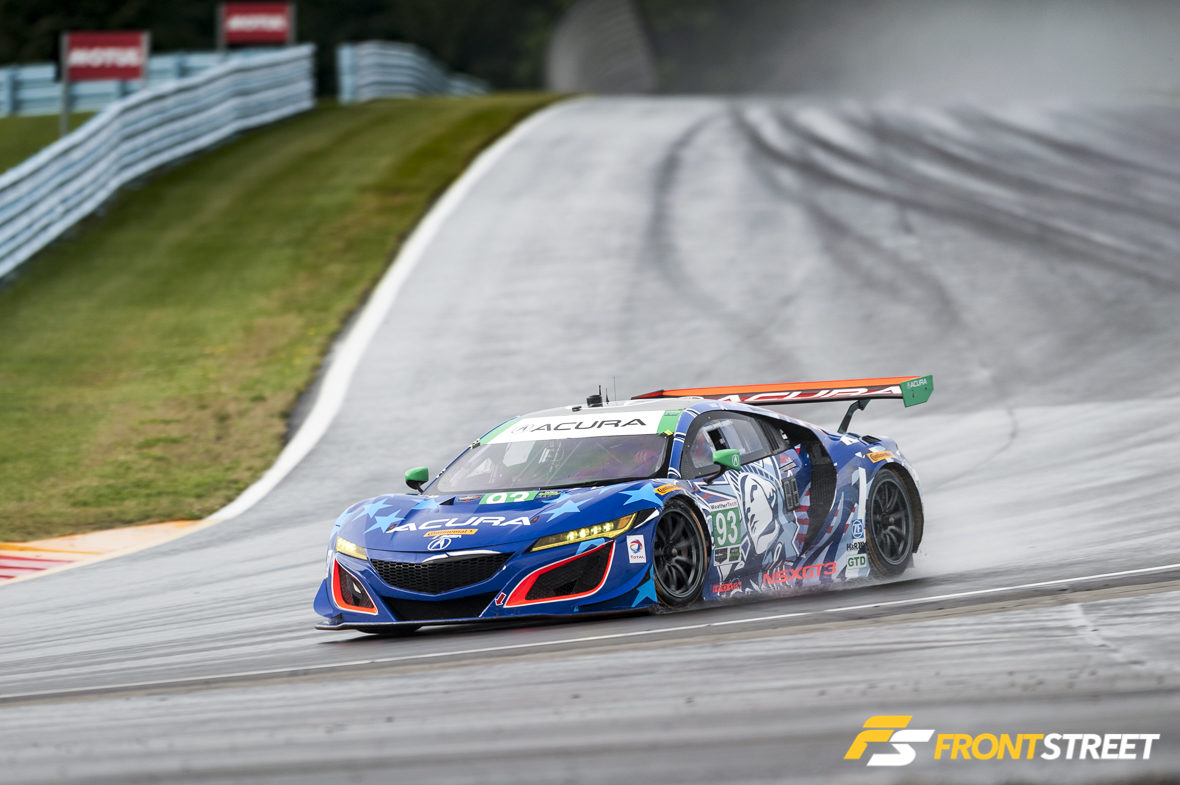
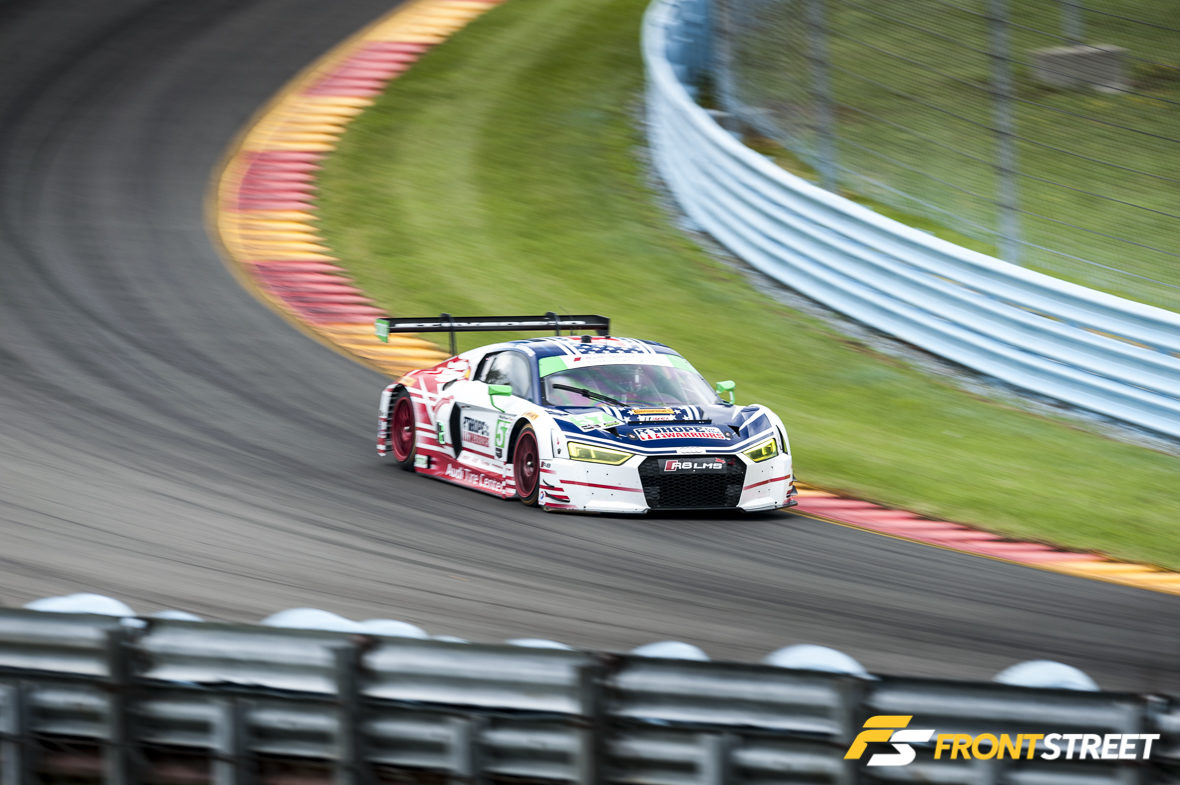
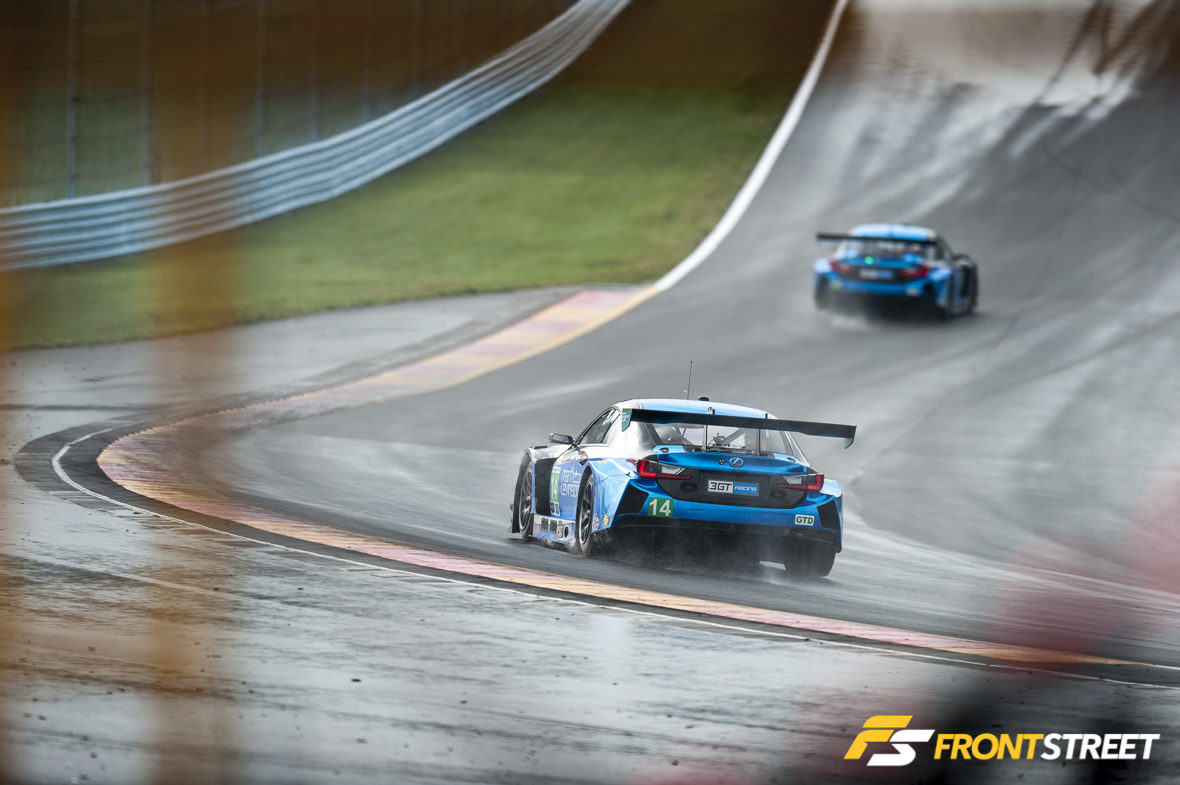
Starting from the pole, Lally and Legge were able to hold onto their lead and win the race, but only 0.592 seconds ahead of the No. 63 Scuderia Corsa Ferrari 488 GT3 team of Alessandro Balzan, Christina Nielson and Matteo Cressoni—a testament to how close competition in the class can be, even after six hours of racing.
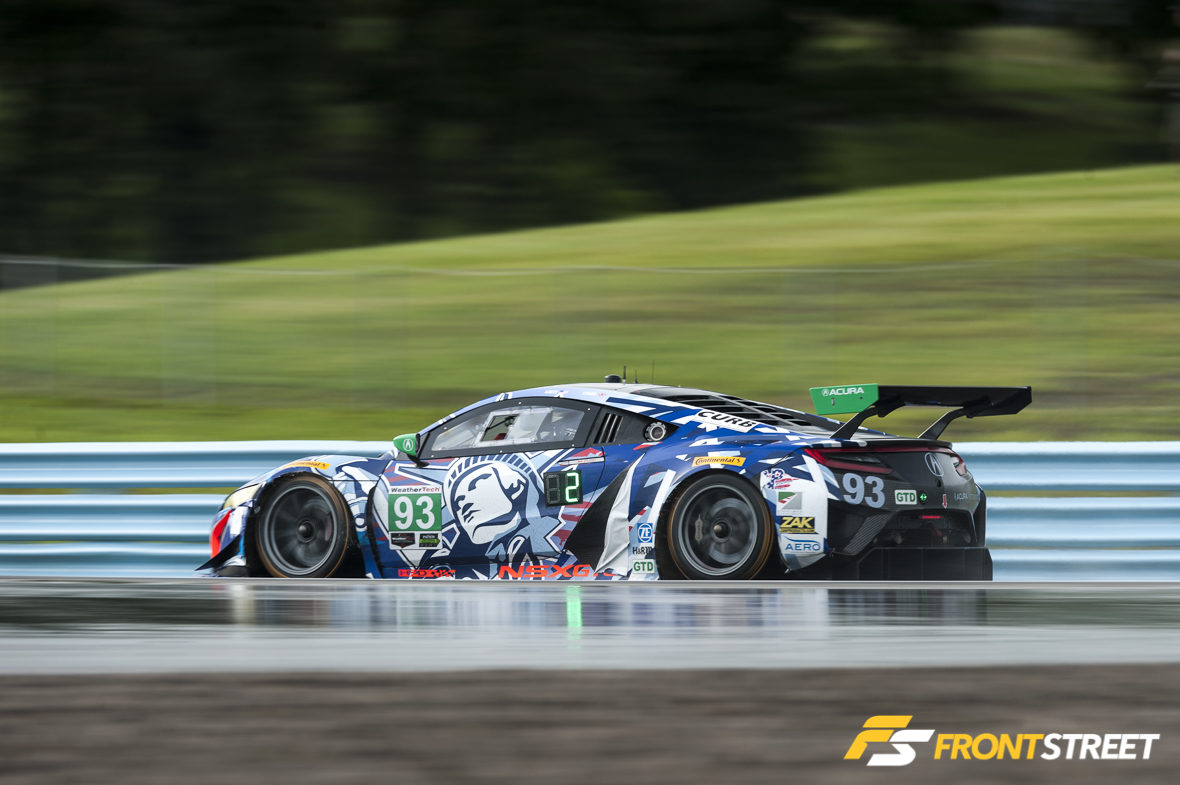

GTLM Class
Appearing nearly identical to GTD machines are the cars of GTLM. Eight teams and cars started the race, prior to the event led in championship points by the No. 3 Corvette Racing C7.R team of Antonio Garcia and Jan Magnussen, and in the Endurance Cup by the No. 912 Porsche GT Team 911 RSR of Gianmaria Bruni and Laurens Vanthoor.
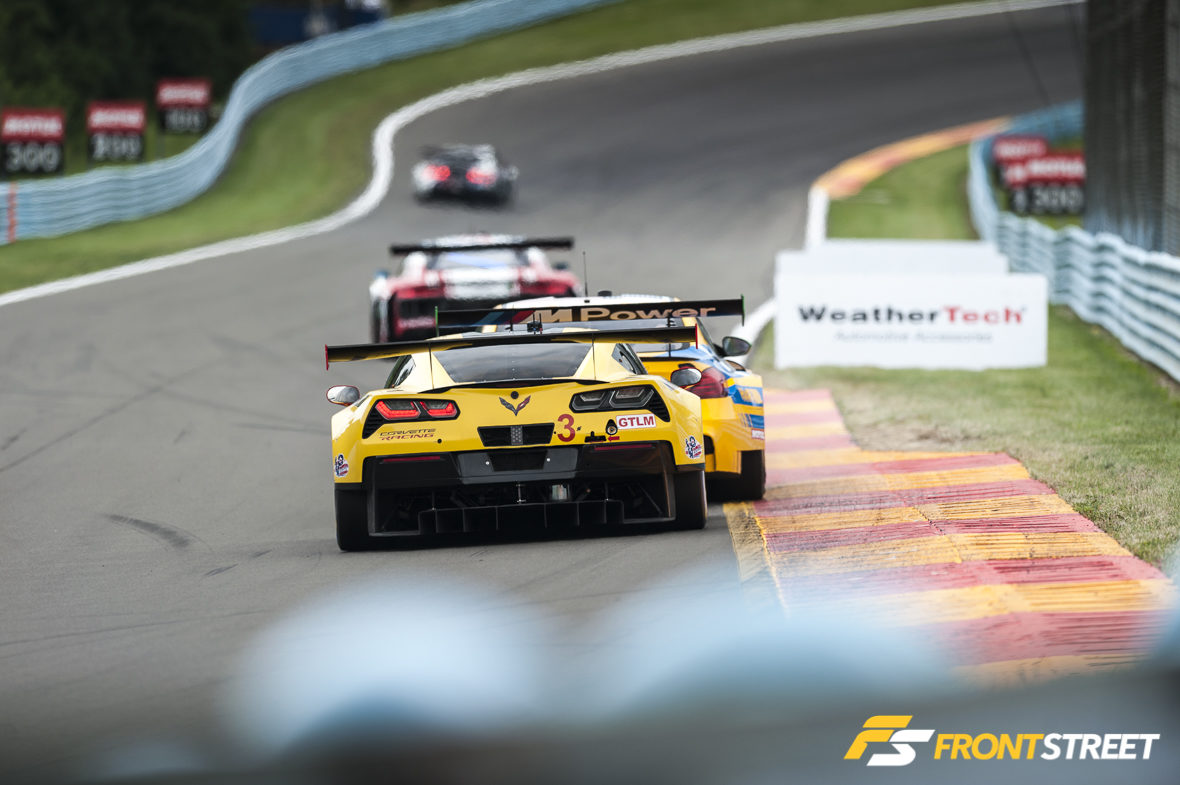
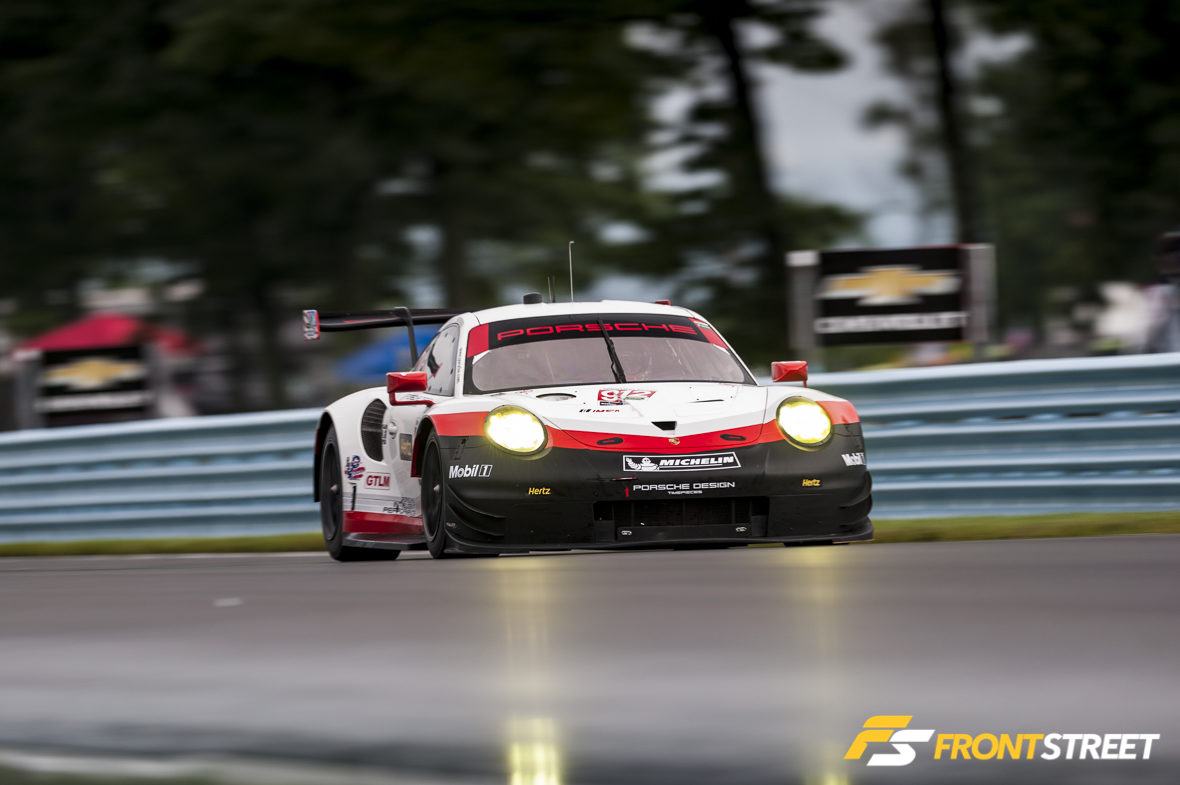
Qualifying started wet and finished dry, with the No. 66 Chip Ganassi Racing Ford GT of Joey Hand and Dirk Mueller clocking the fastest lap (1:42.507), followed by the No. 25 BMW Team RLL M6 of Bill Auberlen and Alexander Sims just a few tenths of a second behind.
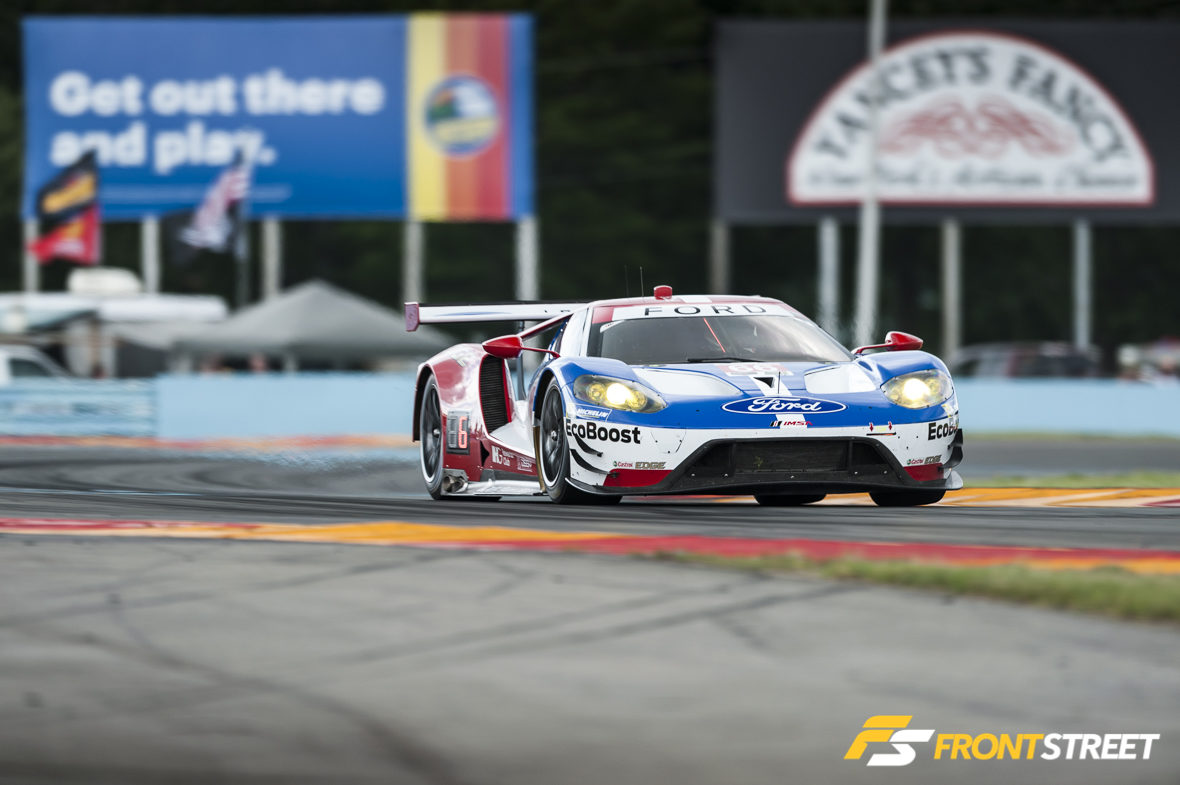
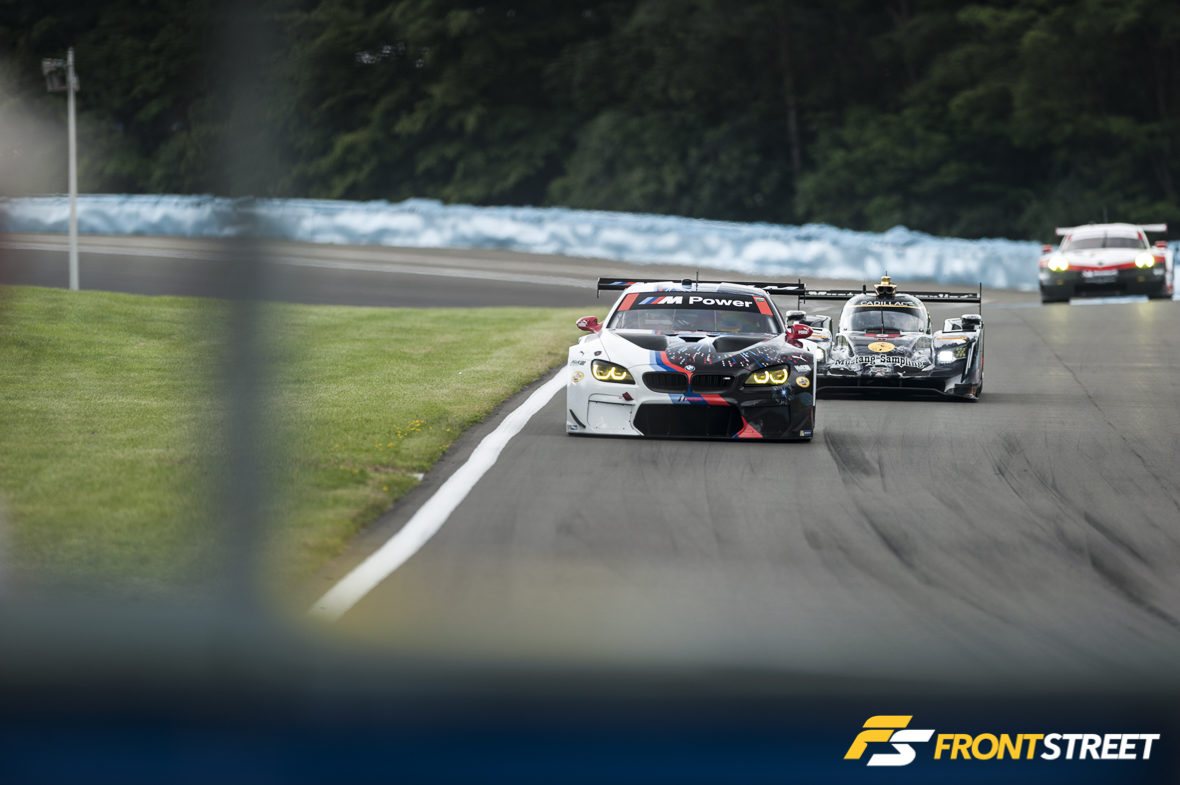
And if that musical chairs wasn’t exciting enough, seven of the eight GTLM contenders took turns leading the race at least once throughout its six hours, until the No. 25 BMW team held their lead for the final 25 minutes through the checkered flag.
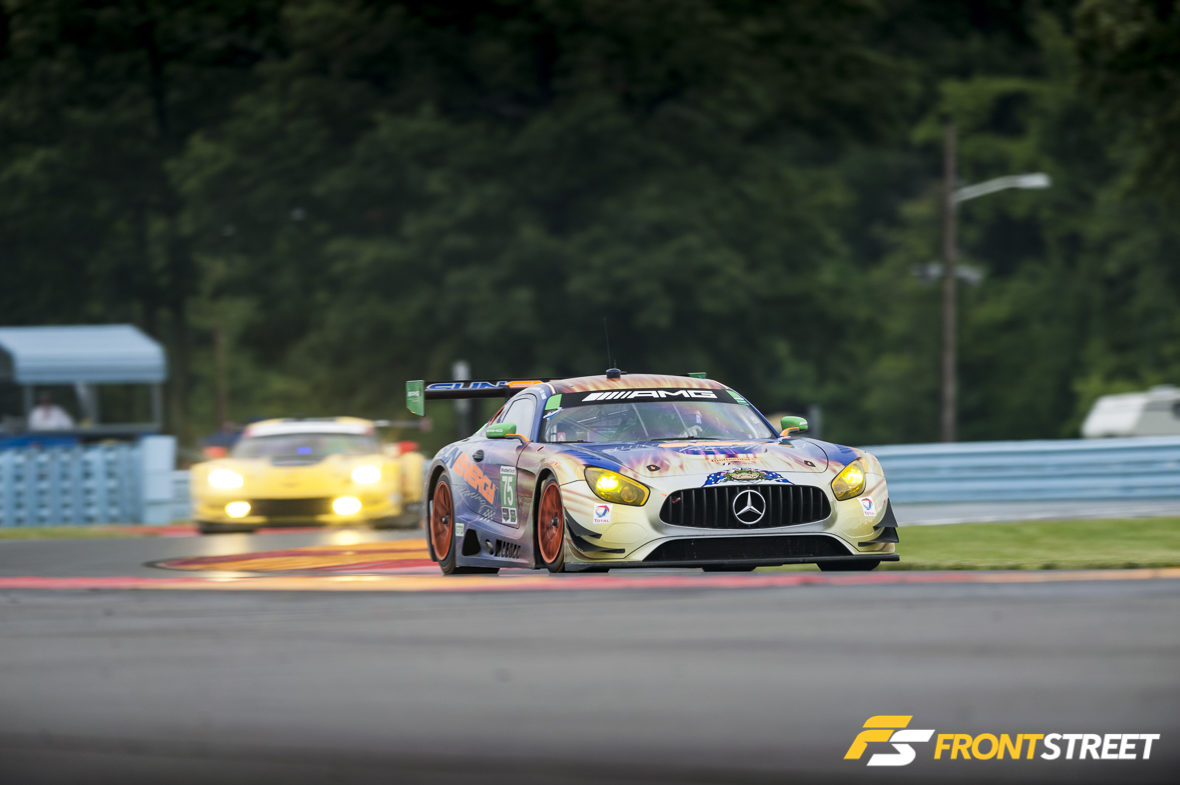

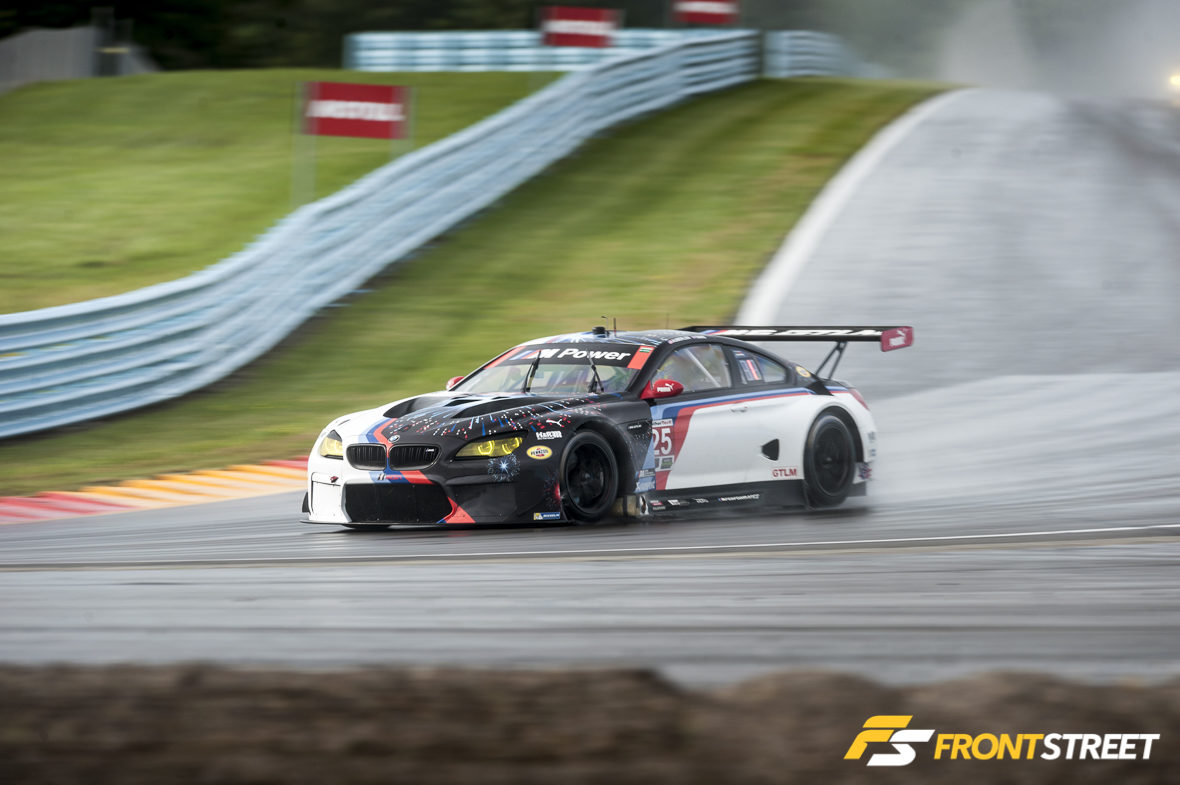
Three separate manufacturers took the GTLM podium in this year’s six-hour race, with the No. 67 Chip Ganassi Racing Ford GT of Richard Westbrook and Ryan Briscoe claiming second just 4.416 seconds from the lead, followed by the Garcia/Magnussen ‘Vette team claiming third.


PC Class
It is confirmed now that the Prototype Challenge class (not to be confused with the IMSA Prototype Challenge presented by Mazda series) will not be returning to competition in 2018, but don’t tell that to the hard-working three remaining teams hell bent on wringing as much out of this final season as possible.
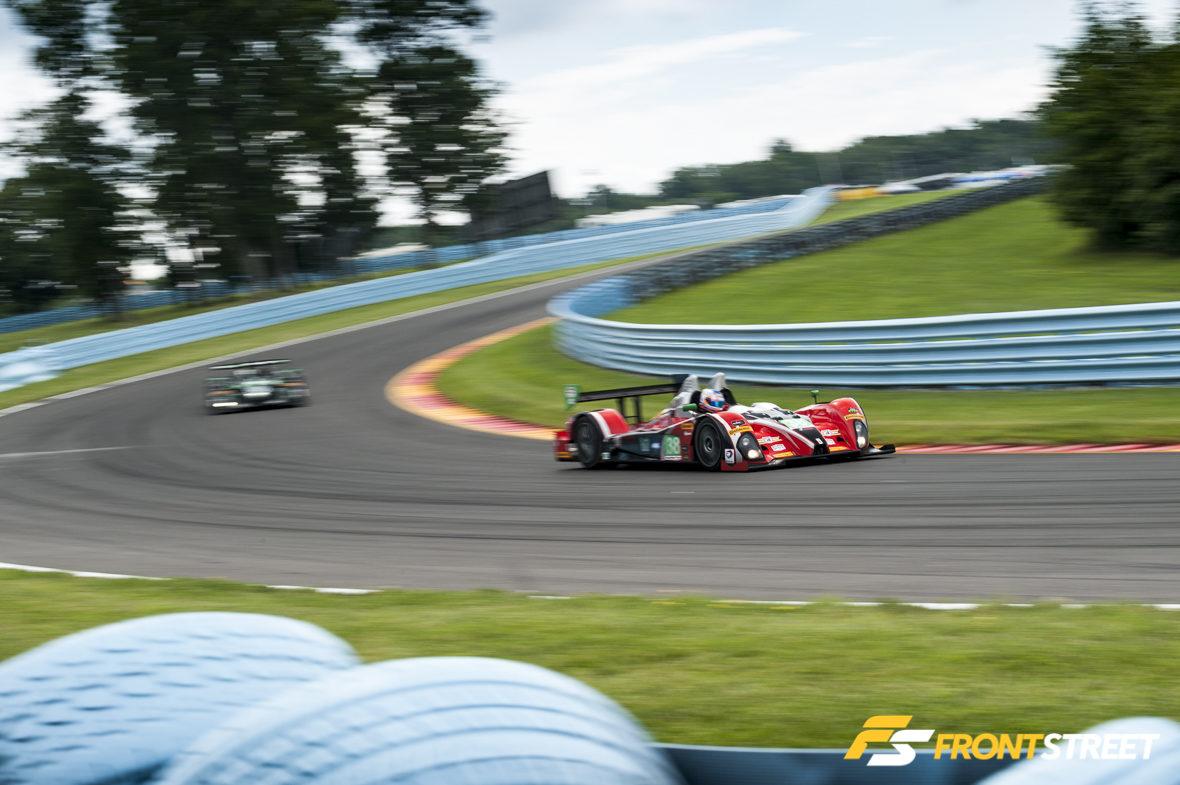

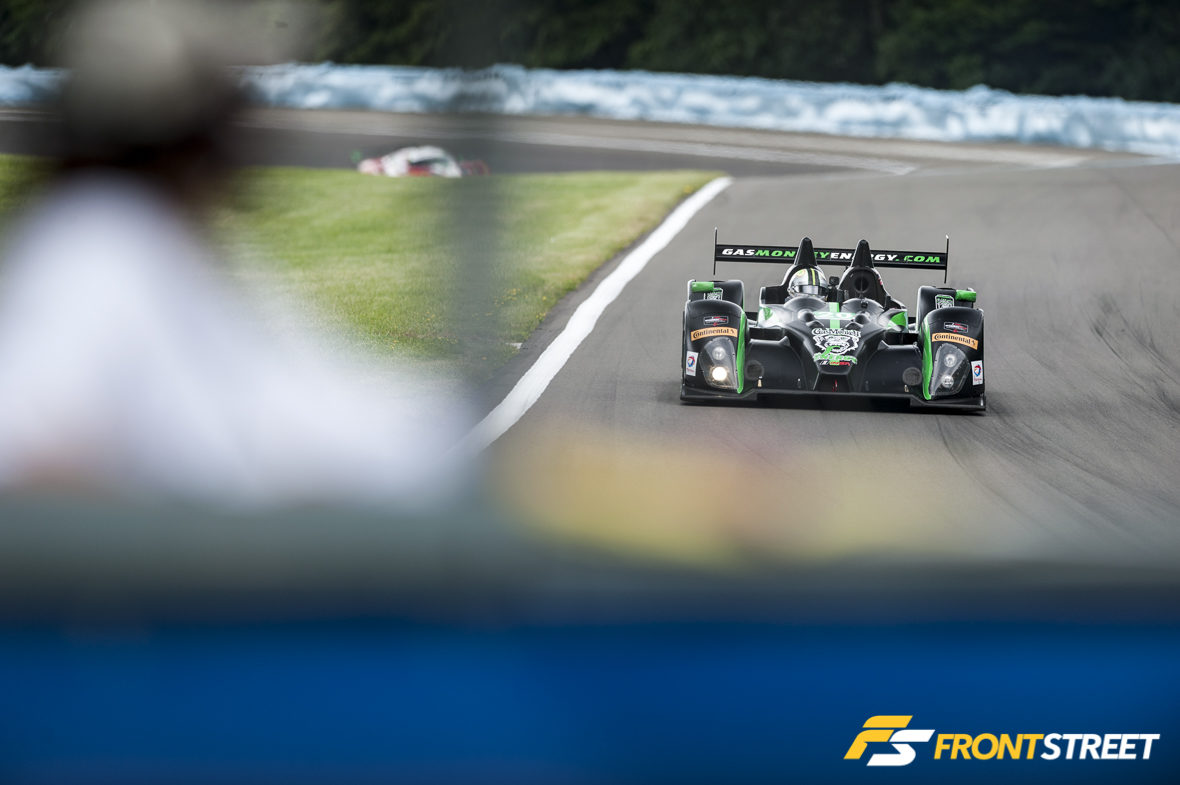
Leading the championship points chase all season and coming into competition at The Glen has been the No. 38 Performance Tech Motorsports team with drivers Kyle Masson, James French and Patricio O’Ward switching off behind the wheel. This event proved to be no thorn in their sides, as the team qualified first in class and earned the win handily after six hours, three full laps ahead of their next-closest competitors.
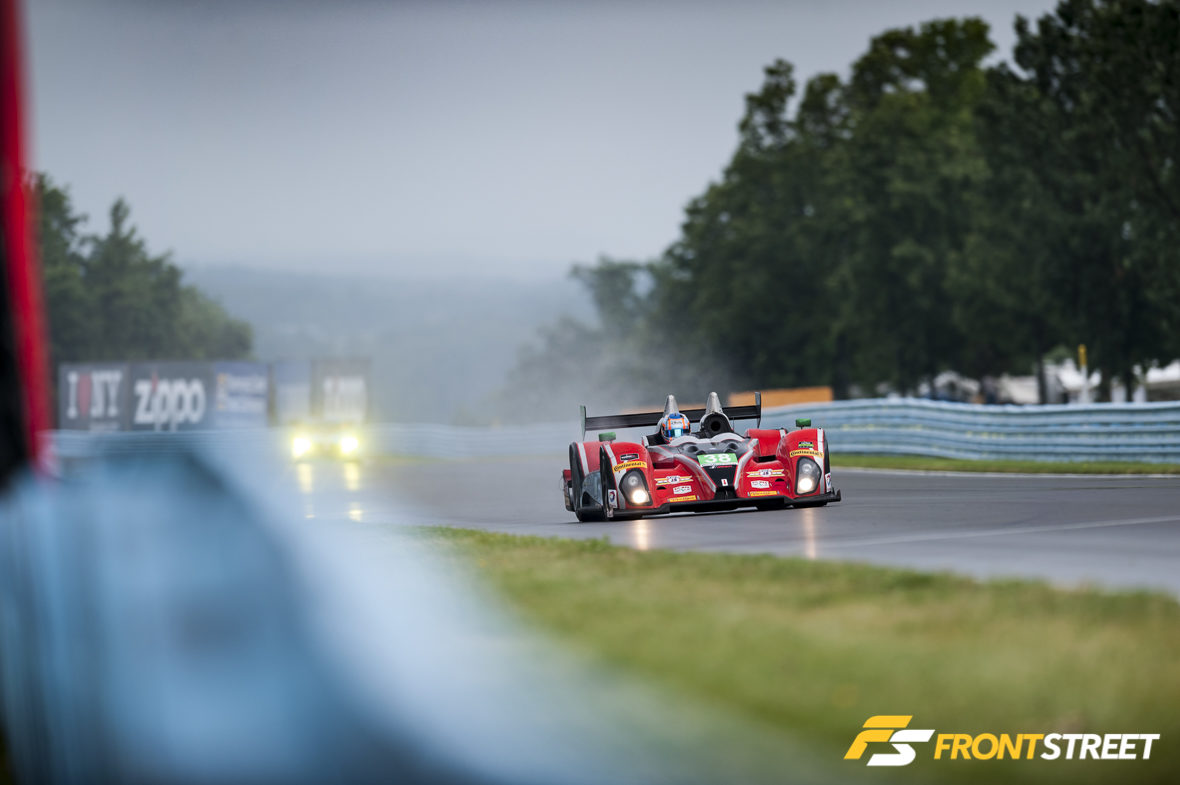
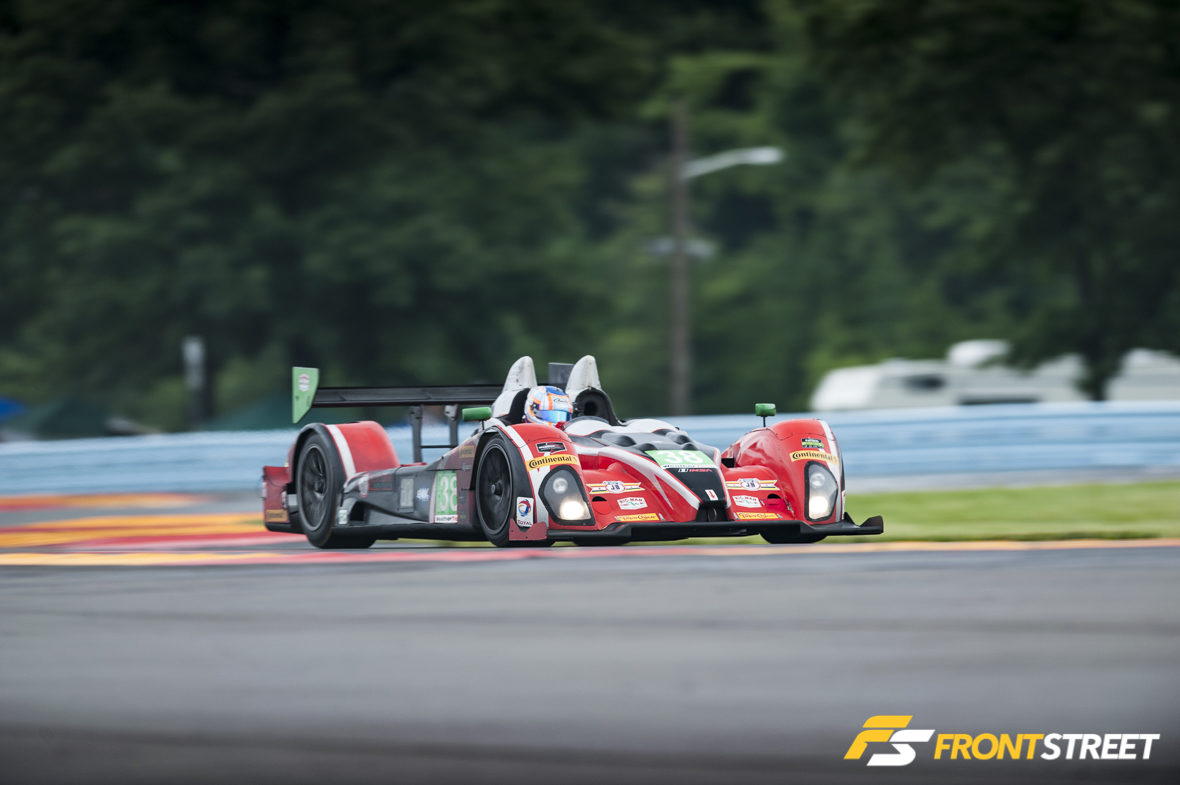
P Class
And of course the fastest cars on the grid—manifesting absolute peak performance among sportscar racing machines in the U.S.—are the racing forerunners of the Prototype class. This year’s partially wet conditions may not have been ideal for them, but their teams soldiered on nonetheless and set the fastest laps of the event, and ran a wholly clean race amidst their lowerclassmen.
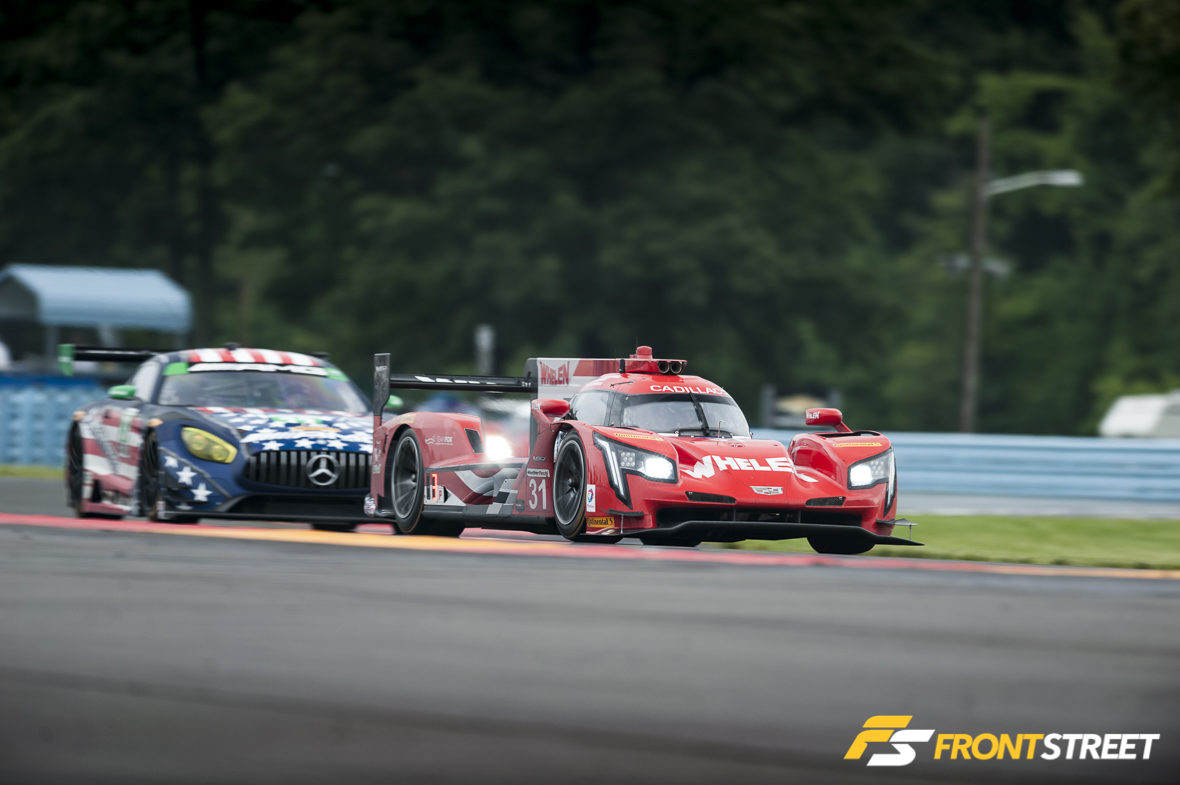
Ten cars in total comprised the Prototype grid this time, led in championship points and the Endurance Cup coming into the event by the No. 10 Konica Minolta Cadillac DPi-V.R team of brothers Jordan and Ricky Taylor, who—like Masson/French/O’Ward in PC—had won every single race thus far.

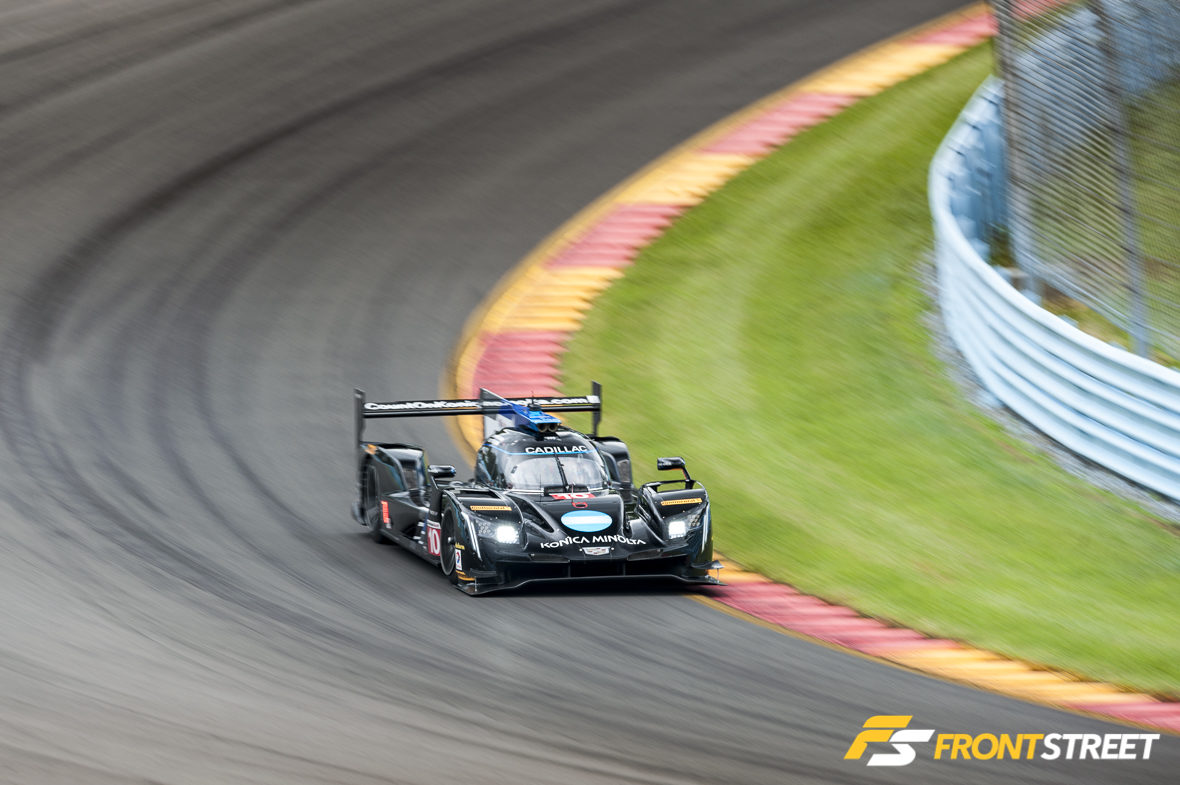
But things began to change in qualifying, where Brazilian driver Pipo Derani in the No. 2 Tequila Patron ESM Nissan DPi clocked the fastest lap and earned the pole start, with a blistering 1:34.405. Interestingly, that performance was only just over a tenth of a second faster than Olivier Pla and Jose Gutierrez in the No. 52 Ligier LMP2—the only LMP2 machine within the six fastest qualifiers.
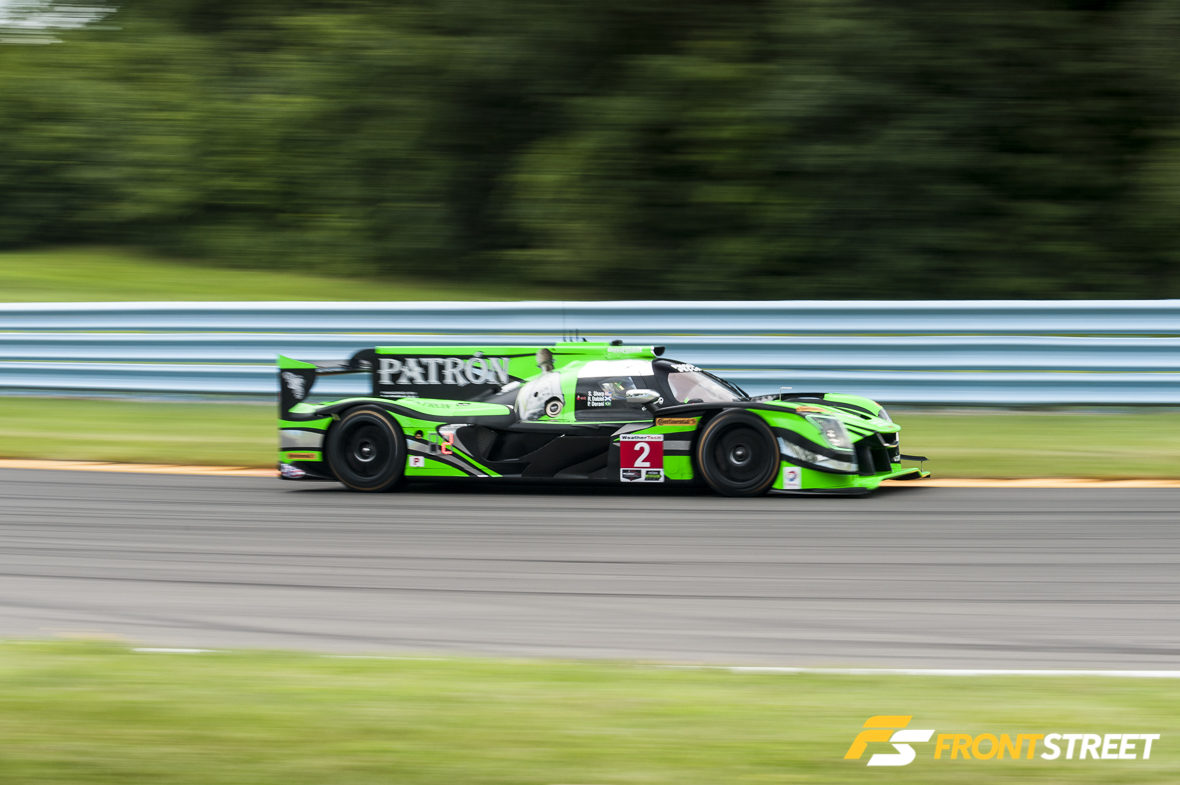
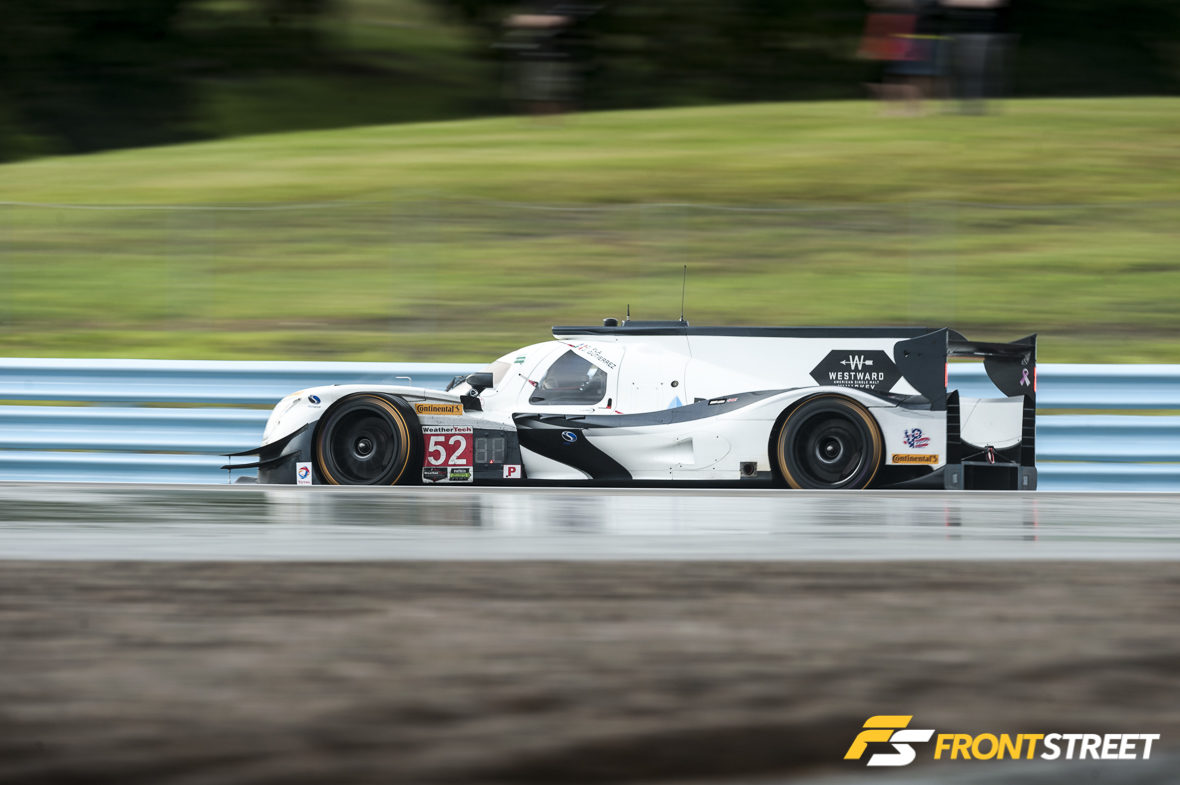
Come race day, Cadillac won its sixth-straight Prototype-class victory and maintained its undefeated season standings, but not at the hand of the No. 10 Konica Minolta team. It was Christian Fittipaldi, Joao Barbosa and Filipe Albuquerque in the No. 5 Mustang Sampling Racing Cadillac DPi who were first to cross the finish line in upset fashion, after passing second place finishers Misha Goikhberg, Stephen Simpson and Chris Miller in the No. 85 JDC-Miller Motorsports car in the final nine minutes of the race. Claiming third was the No. 55 Mazda Motorsport team of Spencer Pigot, Tristan Nunez and Jonathan Bomarito.
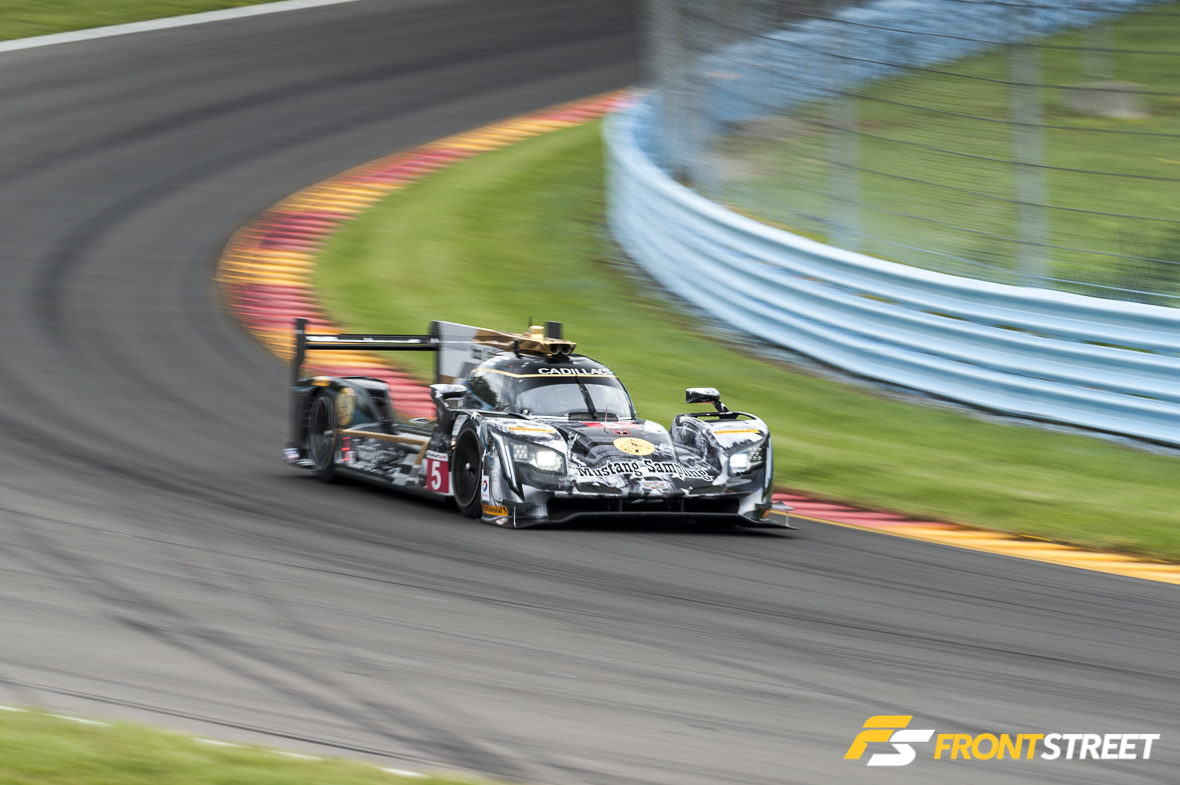

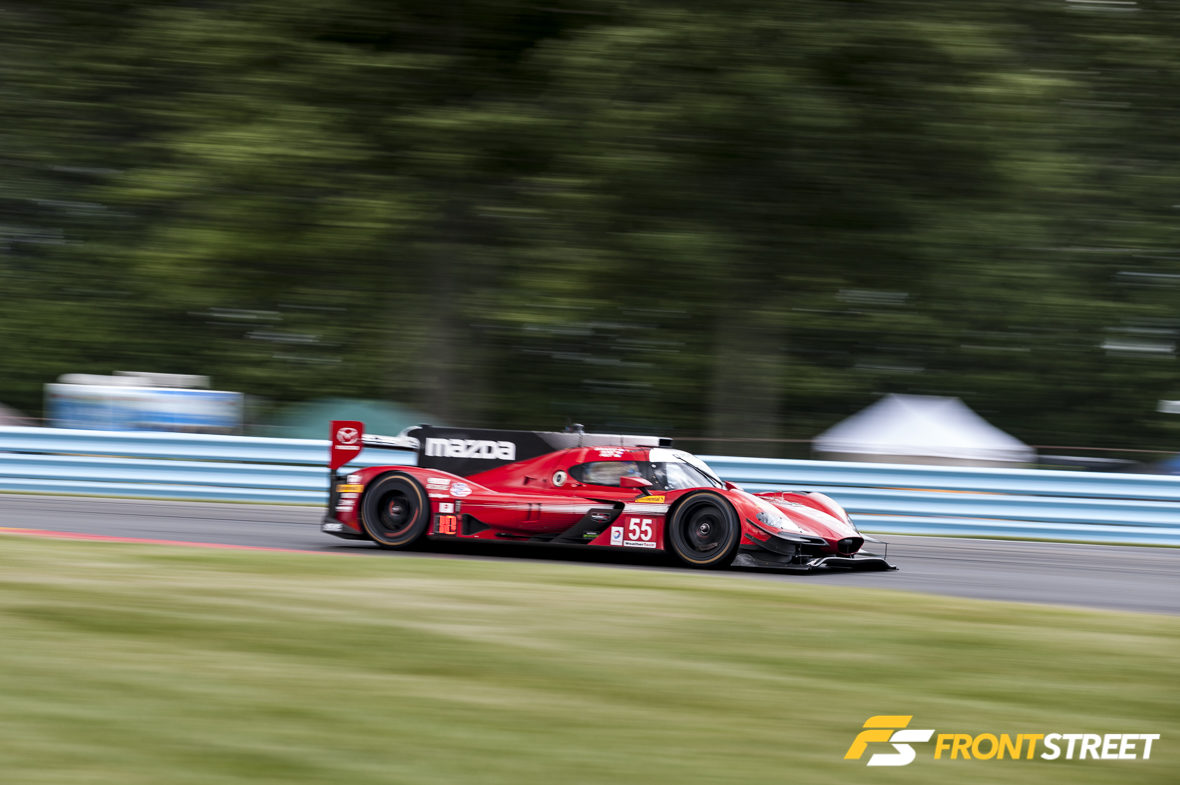
The top four finishers (Pla/Gutierrez finished fourth in the No. 52 machine) all logged exactly 200 laps over the course of six hours, which again speaks to the consistency and competitiveness of IMSA Prototype teams.
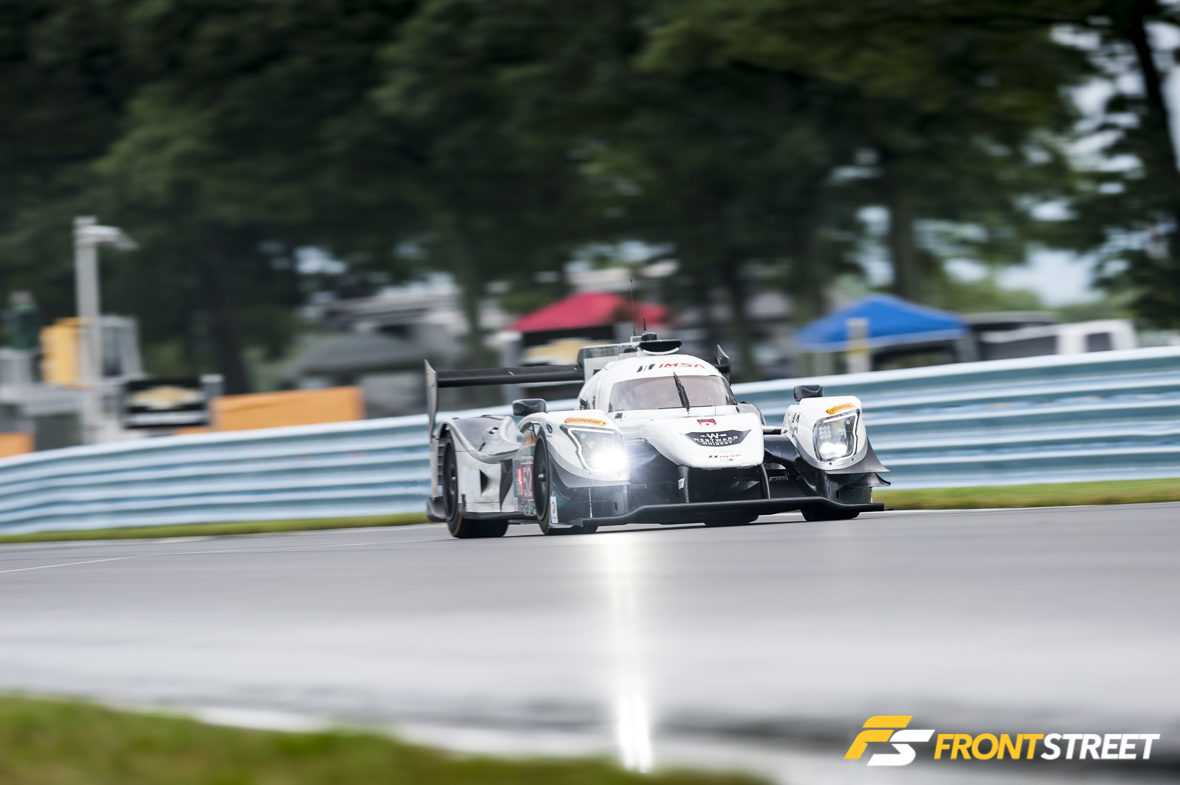
In Closing
While the turning point of the IMSA season might have passed on a weekend where all in attendance (and watching from home) celebrated our shared freedoms in truly American fashion, unlike those historic battles that secured our independence centuries ago competition here is still very much anyone’s for the taking. For the remainder of the season’s schedule, broadcast times and info, and to download the awesome IMSA app, head over to www.IMSA.com
